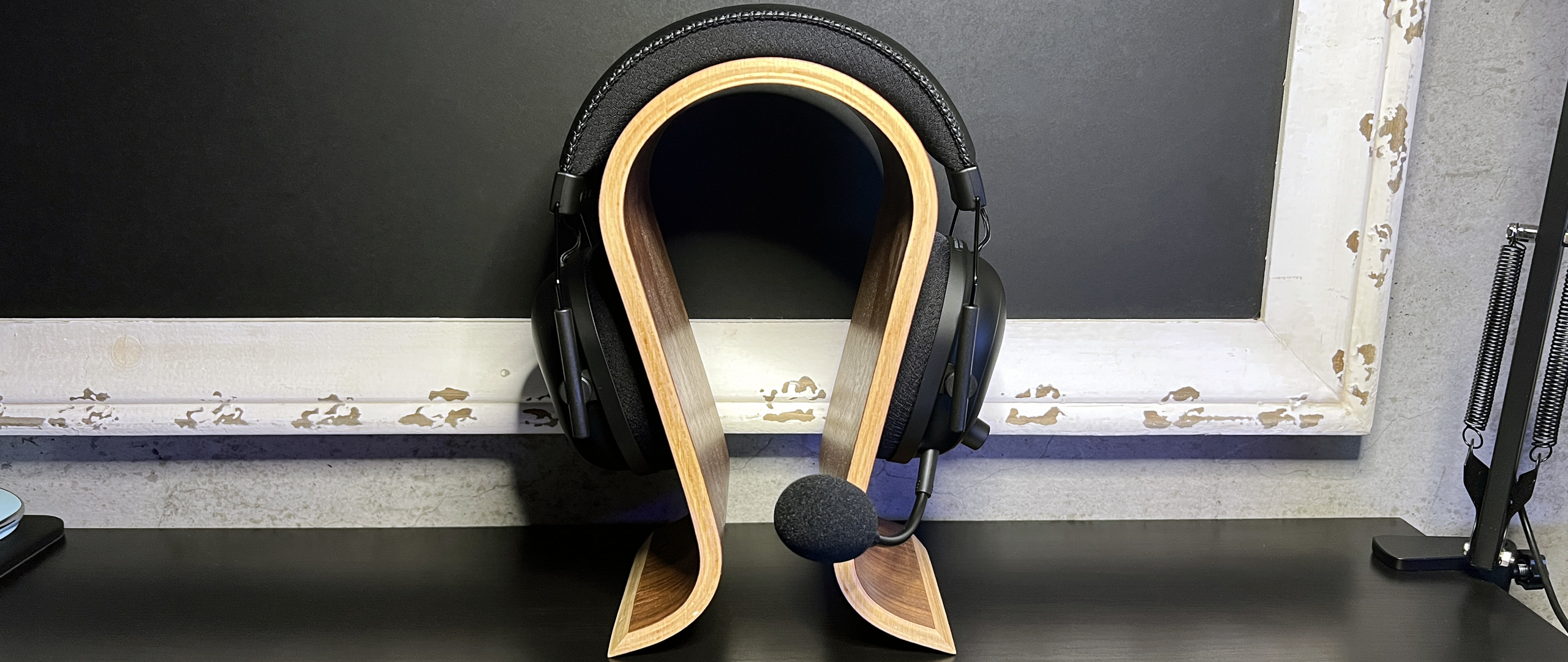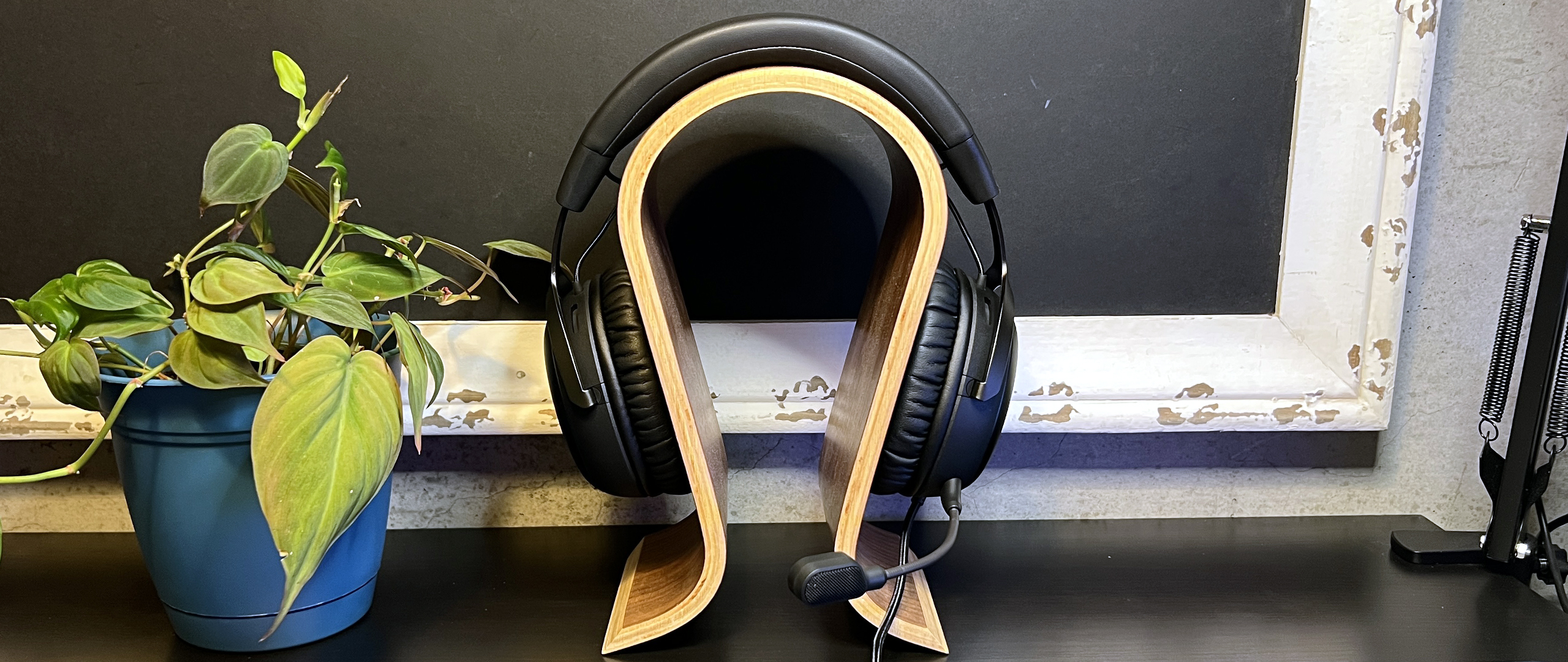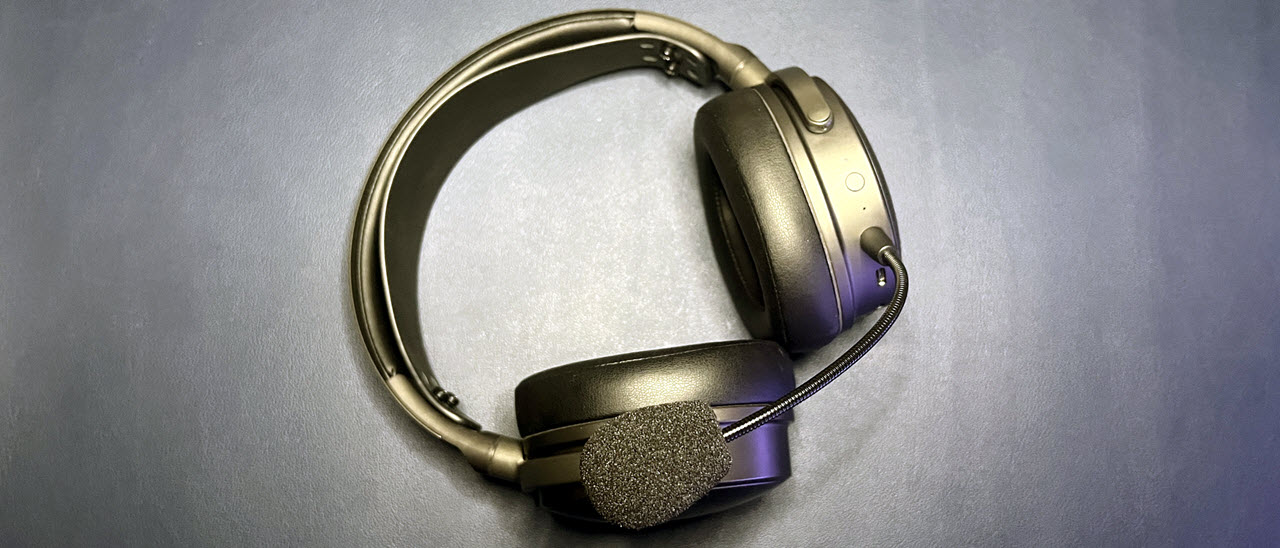Best Gaming Headsets 2025
So you can hear everything... and everyone can hear you.
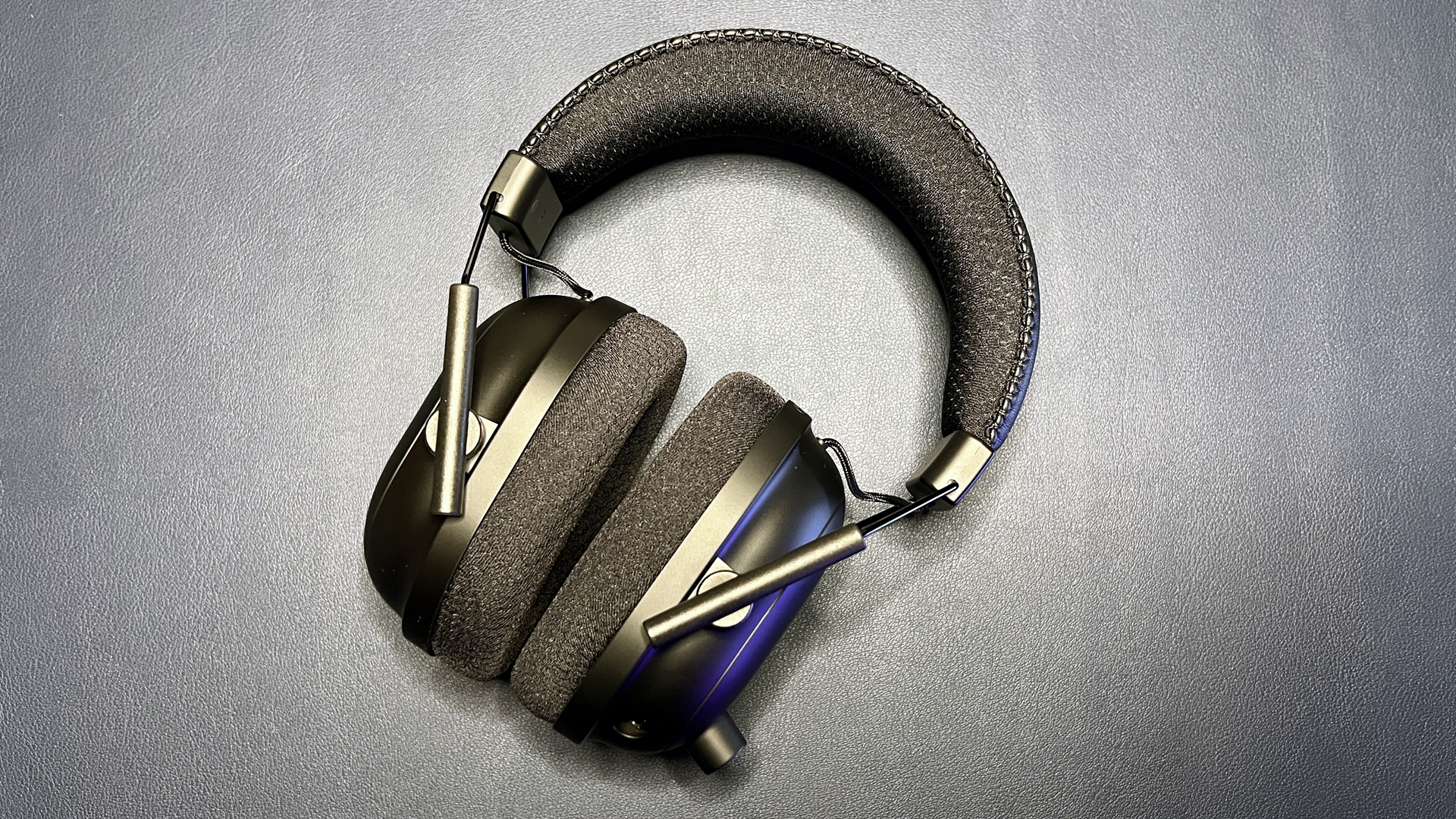
1. Best For Most
2. Best Budget
3. Best For Audiophiles
4. Other Headsets Tested
5. How We Test
6. Shopping Tips
Gaming headsets are just as important as other gaming peripherals: The sounds of your virtual world and how you communicate with your teammates hinge on the device you wear on your head. (Well, unless you're listening through some of the best PC speakers.) And you'll likely be using your gaming headset to take work calls, stream shows, and listen to music, too.
Picking out the perfect gaming headset is harder than it sounds, as gamers now have more options than ever, from budget-friendly basics to ultra-premium audiophile-grade models. You've probably already got a budget in mind, but there's more to consider than just price: connectivity, audio and microphone quality, and, of course, comfort and adjustability are all important factors when you're shopping for a headset.
It's more than a little overwhelming, which is why we're here to help. We've tested hundreds of gaming headsets over the years and we've hand-picked the best gaming headsets you can buy today for every scenario — whether it's strategizing with teammates in multiplayer or immersing yourself solo in an open world.
(If you're looking for a wireless headset, specifically, check out our list of best wireless gaming headsets.)
The Best Gaming Headsets You Can Buy Today
Why you can trust Tom's Hardware
Best Gaming Headset for Most
Specifications
Reasons to buy
Reasons to avoid
After months of testing, listening, and gaming with a rotation of headsets, my pick for best overall gaming headset is the Razer's updated-for-2023 BlackShark V2 Pro. This wireless, over-ear headset is lightweight and extremely comfortable and it has a detachable boom mic that makes your voice sound great. It has Razer's 50mm "Triforce Titanium" dynamic drivers and a sound profile that's tuned for gaming — complete with several built-in game-ready presets. While this headset isn't as great for listening to music, it can be tweaked in Razer's Synapse 3 software for a pretty solid listening experience.
It does have some limitations when it comes to connectivity: it only offers 2.4GHz wireless and Bluetooth connectivity — no analog connection. The 2.4GHz/Bluetooth connections are not simultaneous, but I have yet to find a multi-device gaming headset that can switch seamlessly between devices consistently. Our previous top choice, SteelSeries' Arctis Nova Pro, might just be the gaming headset with the most versatile multi-device connectivity, and it's fantastic when it works — but it doesn't always work. Unfortunately, I've found myself wrestling with the Arctis Nova Pro's wireless connection too often to be able to recommend it as the best gaming headset for most people, but it's still worth a look if you want something that will connect to multiple devices at once.
If you're looking for a headset that can mix audio from 2.4GHz wireless and Bluetooth connections, I've had the best luck with Logitech's G735, while several of my colleagues like the Corsair Virtuoso RGB Wireless XT.
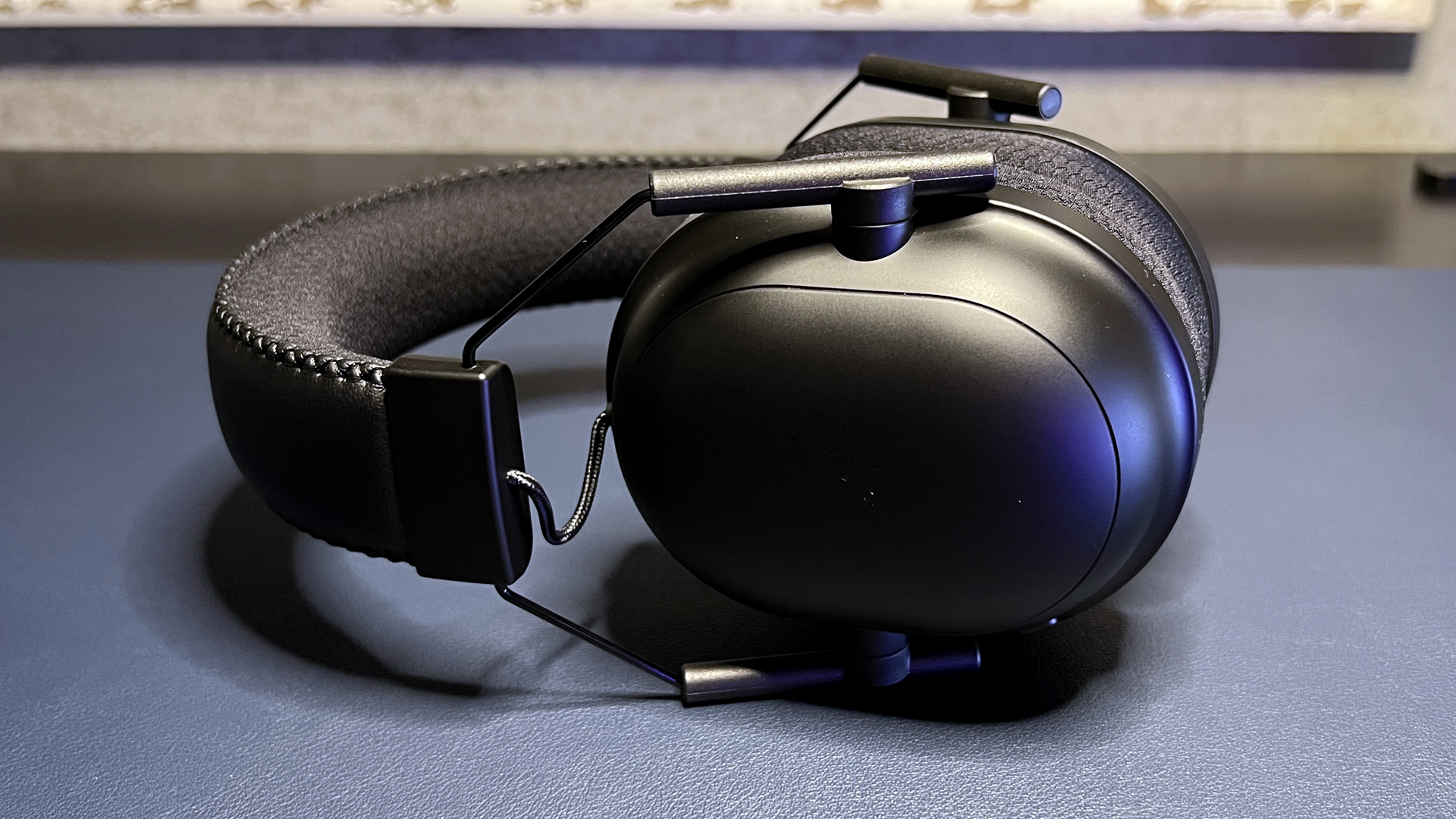
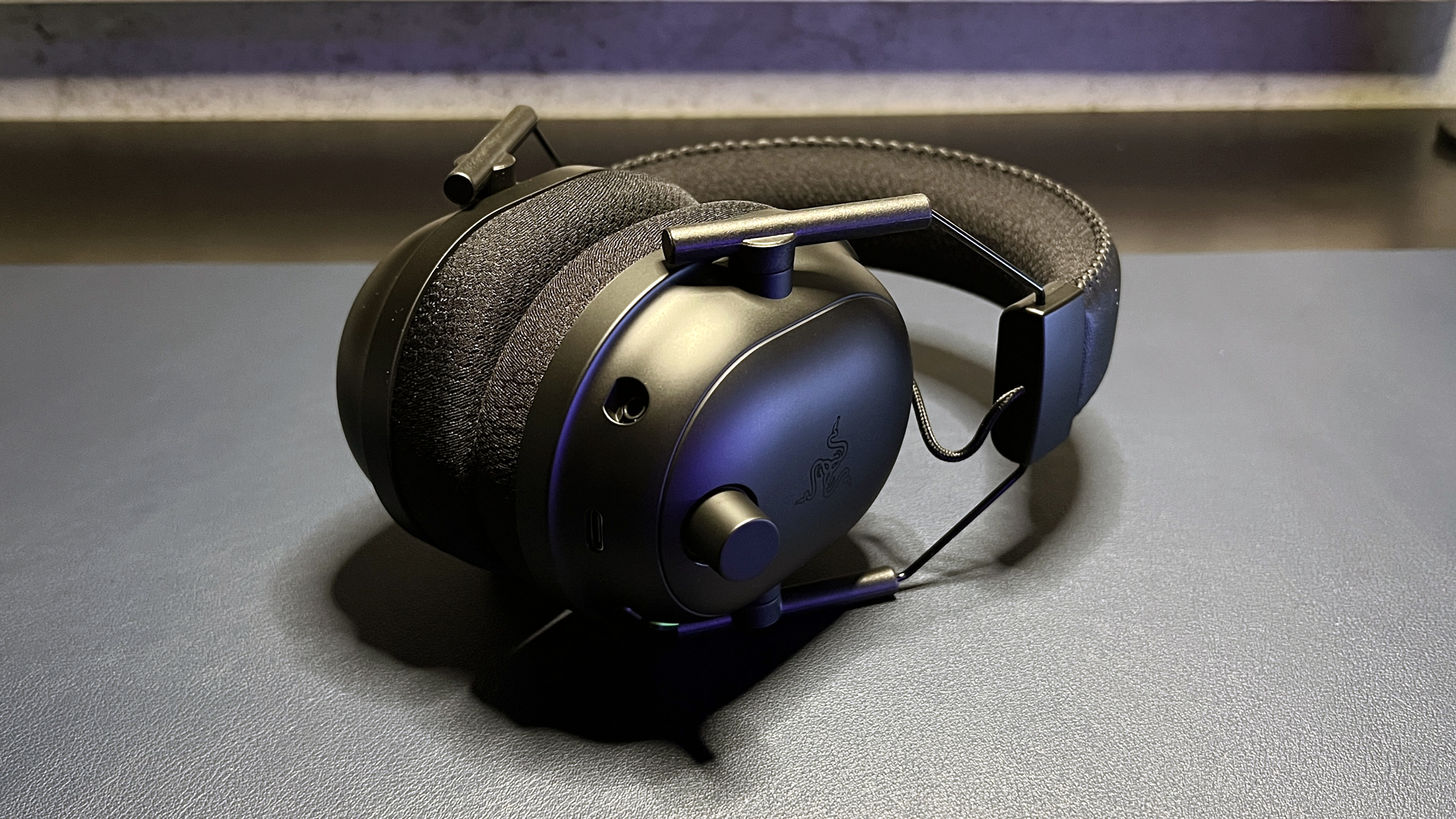
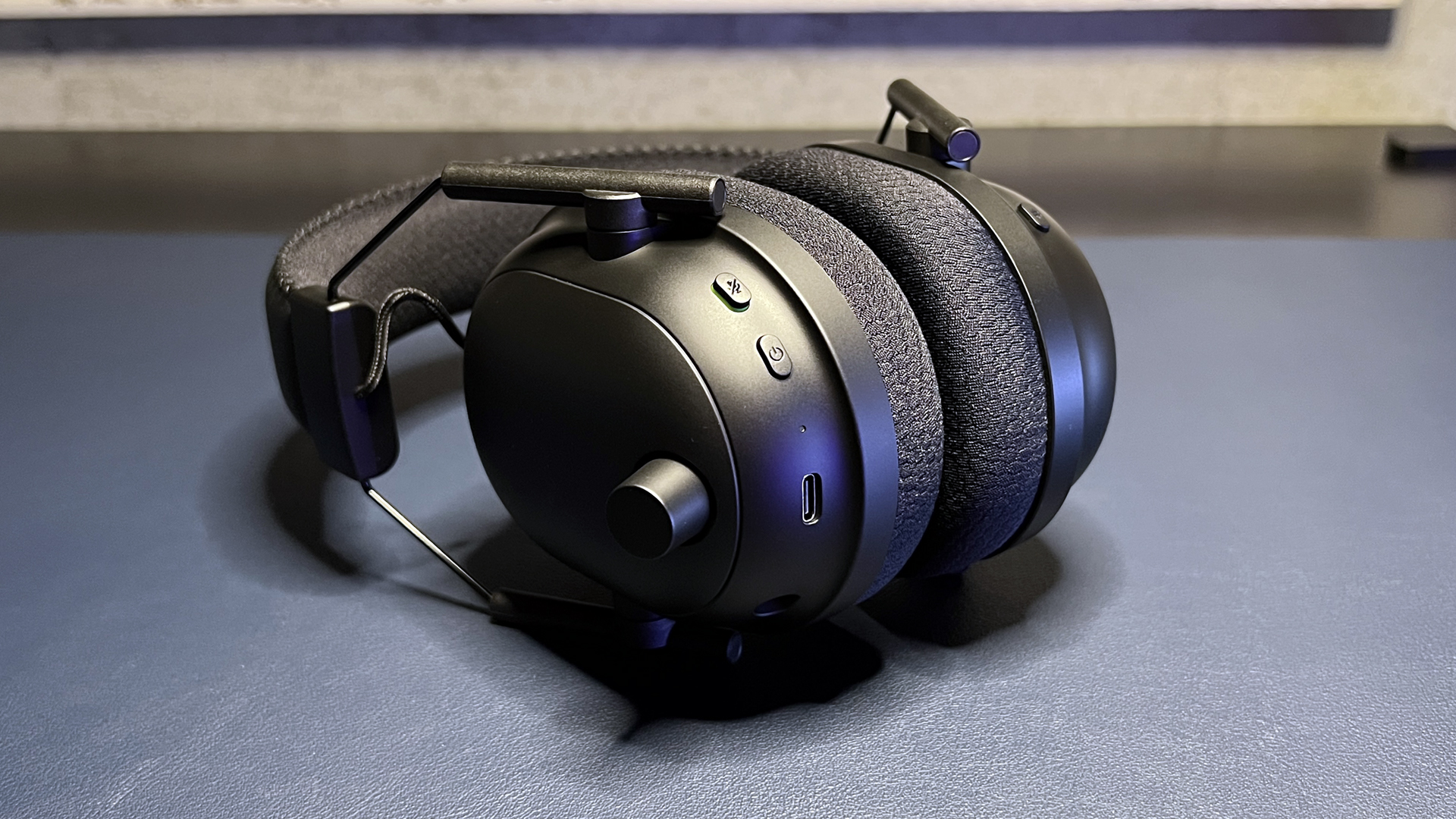
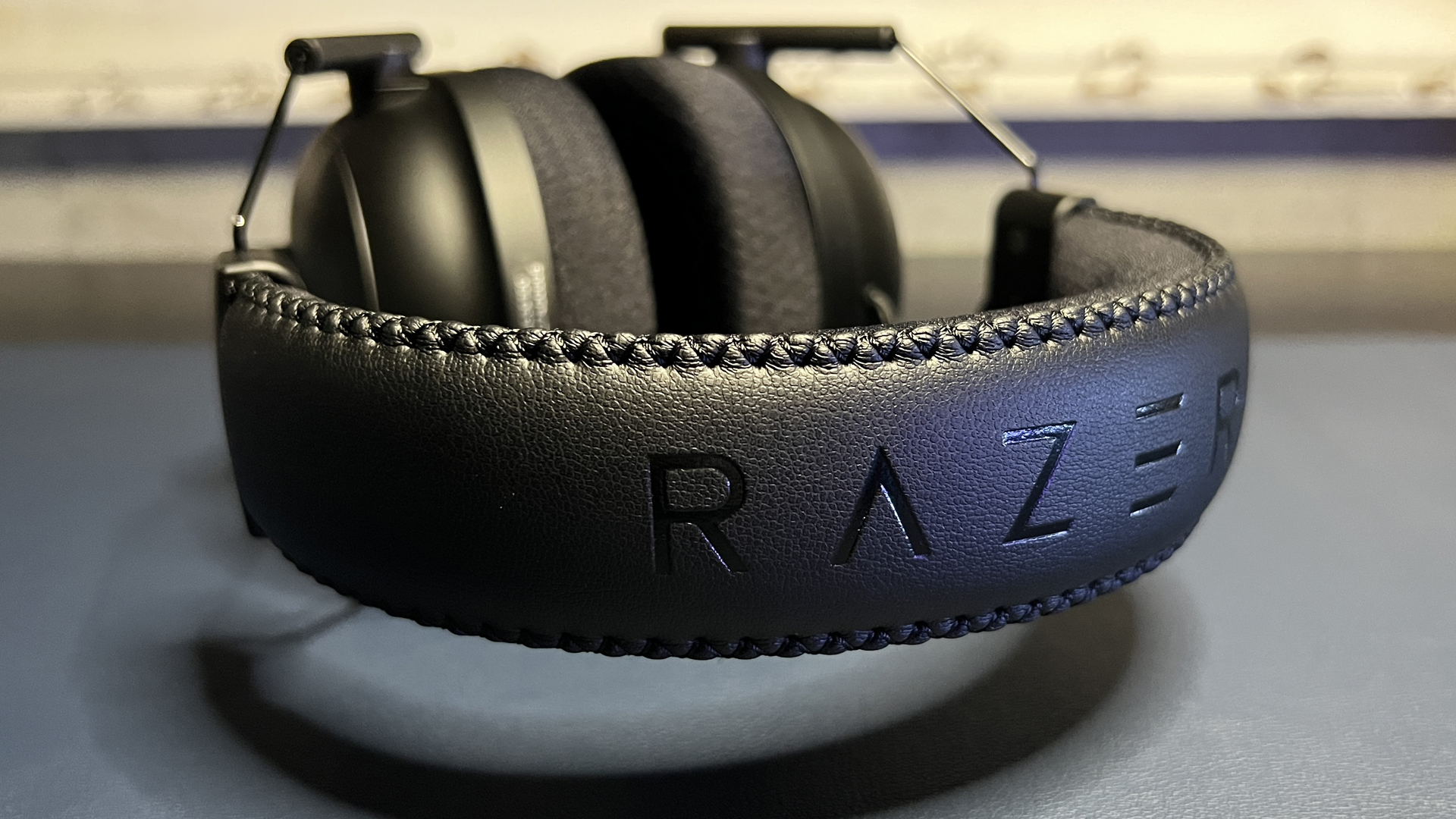
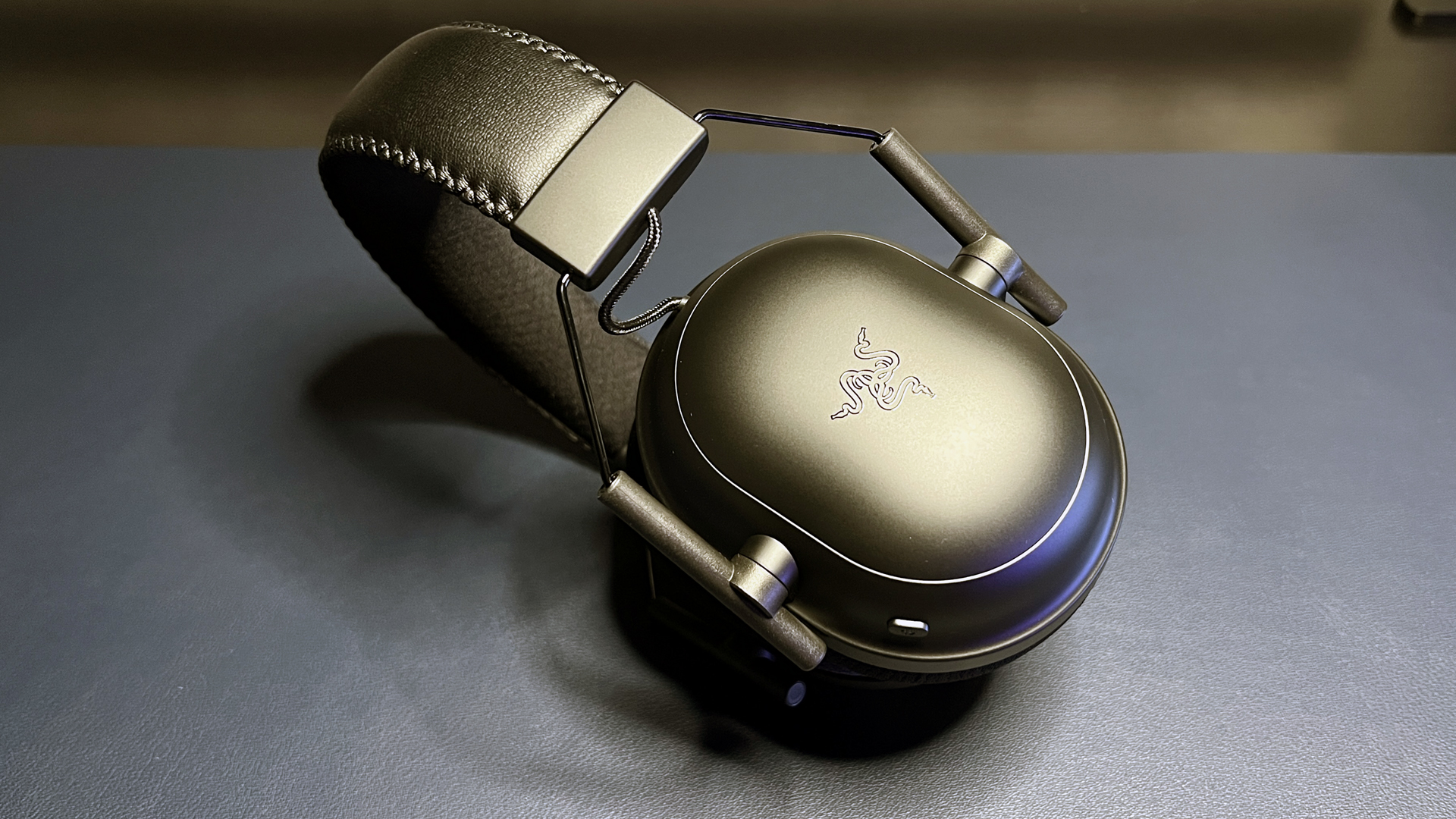
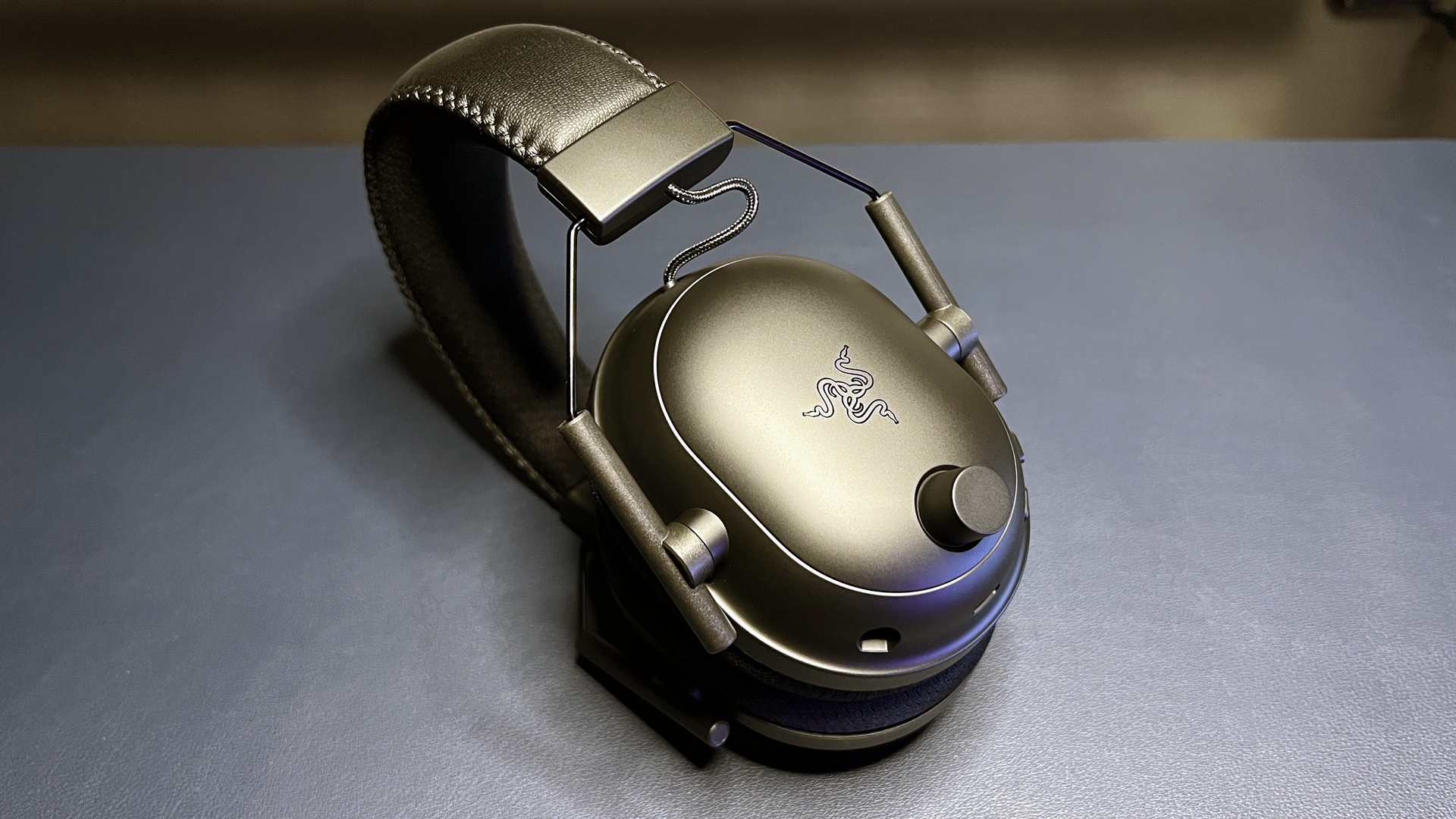
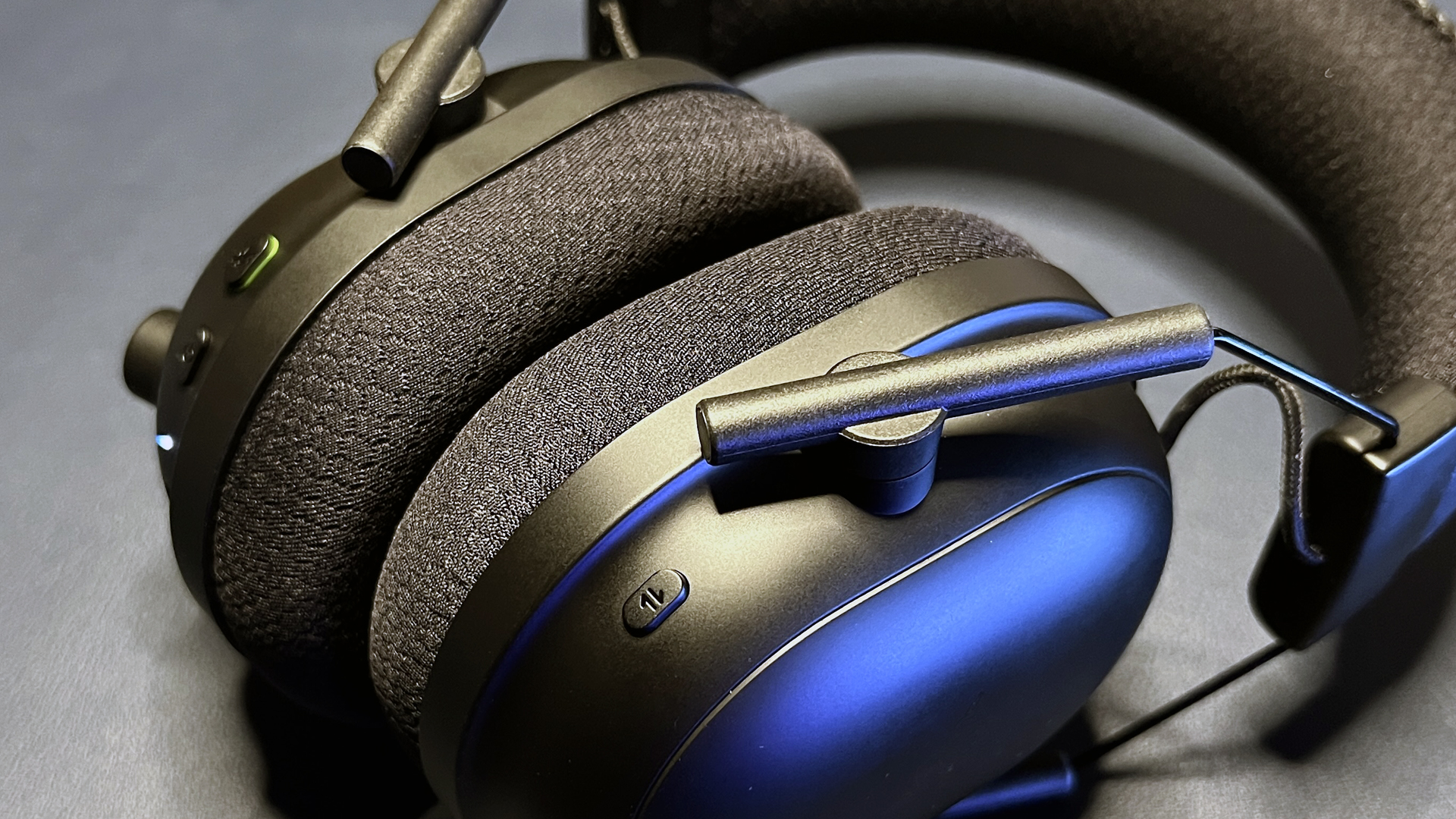

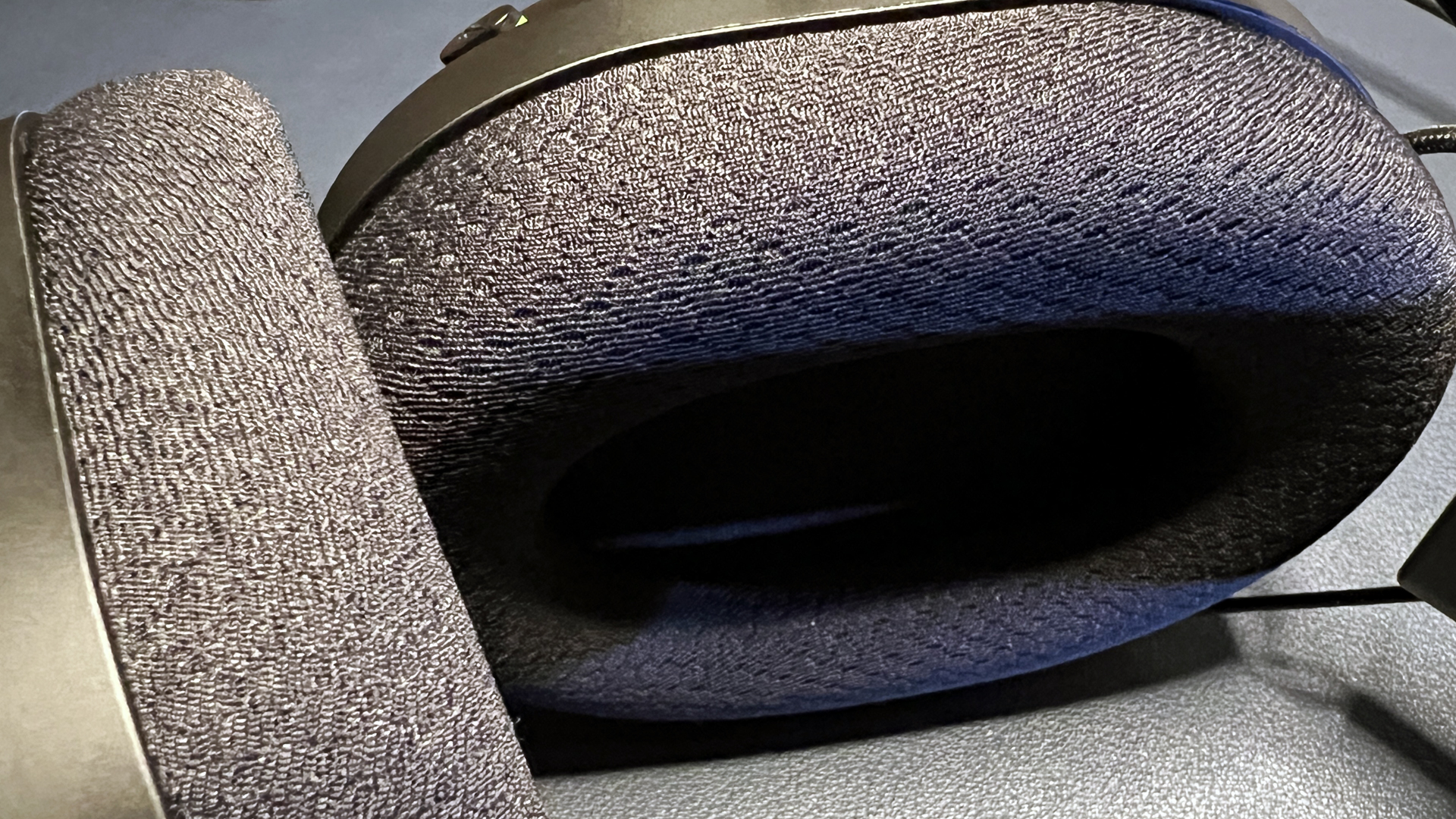
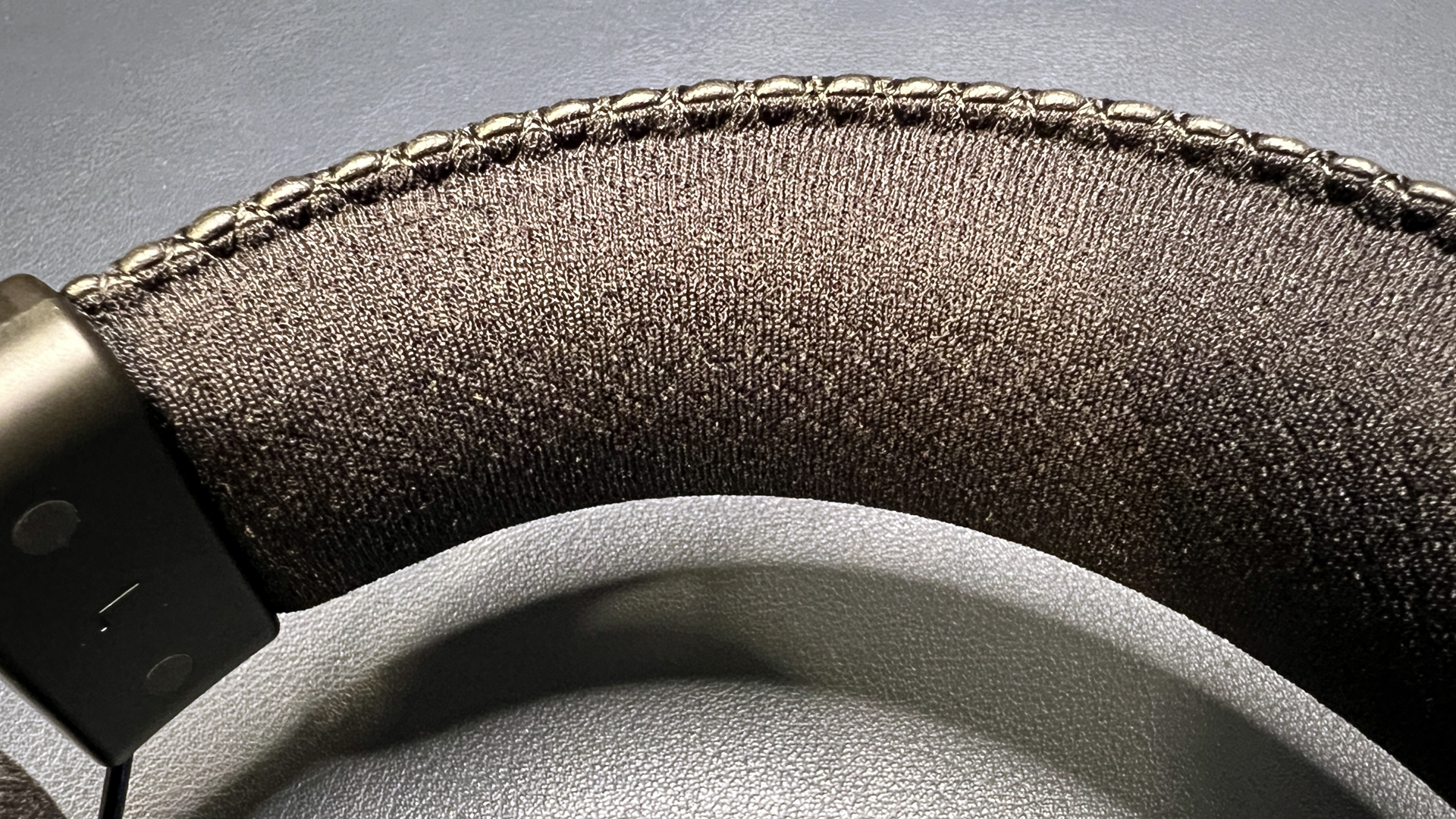
The BlackShark V2 Pro (2023) is an update to Razer's BlackShark V2 Pro (originally released in June 2021). It looks almost identical to its predecessor — all black (or white/black), with a padded, leatherette-covered headband, stainless steel sliders, fabric-covered memory foam earpads, and smooth, plastic earcups. The headset is incredibly comfortable: it's fairly lightweight (11.29 ounces / 320g), and the stainless steel sliders allow for smooth, easy earcup height adjustment. The sliders are thin and flexible enough to allow for moderate earcup swivel, and while they may look a little flimsy, they've been reinforced as part of the update — and are still holding up well after a year. I will point out that the earcups don't swivel to lie flat like you'll see in some gaming headsets; the BlackShark V2 Pro (2023) is a headset designed primarily for PC gaming and isn't terribly convenient for travel. If you're looking for a gaming headset that can double as a lifestyle headset, Razer's Barracuda Pro is a lightweight, comfortable wireless gaming headset that packs away nicely in its included rigid travel case.
I have a love-hate relationship with headsets, especially when it comes to comfort: I'm particularly sensitive to tension and tugging on my head (seriously — I don't even like putting my hair up). So trust me when I say the BlackShark V2 Pro (2023) is extremely comfortable. The thin, flexible sliders make for a light (but not too light) clamping force, and the fabric-covered earpads are soft and breathable and do a very good job of passive noise cancellation (for the listener, anyway — those around me could still hear what I was listening to at higher volumes).
Audio quality isn't the only thing you should be looking for in a gaming headset, but it's still, arguably, the most important thing. The BlackShark V2 Pro (2023) sports Razer's 50mm Triforce Titanium dynamic drivers, which have a frequency response range of 12 - 28,000 Hz. This is slightly wider than most gaming headsets, which typically stick to the standard 20 - 20,000 Hz. The drivers are tuned for — surprise, surprise — gaming, out of the box, and the headset comes with five game-ready EQ presets for Apex Legends, Call of Duty, CS:GO, Fortnite, and Valorant. These presets, along with the four default non-game presets, can be customized with Razer's Synapse peripheral software — and all changes save directly to the headset. The headset also features built-in THX Spatial Audio, which isn't overly impressive but offers a slightly wider soundstage and more layered environmental sounds in games with pre-built THX profiles.
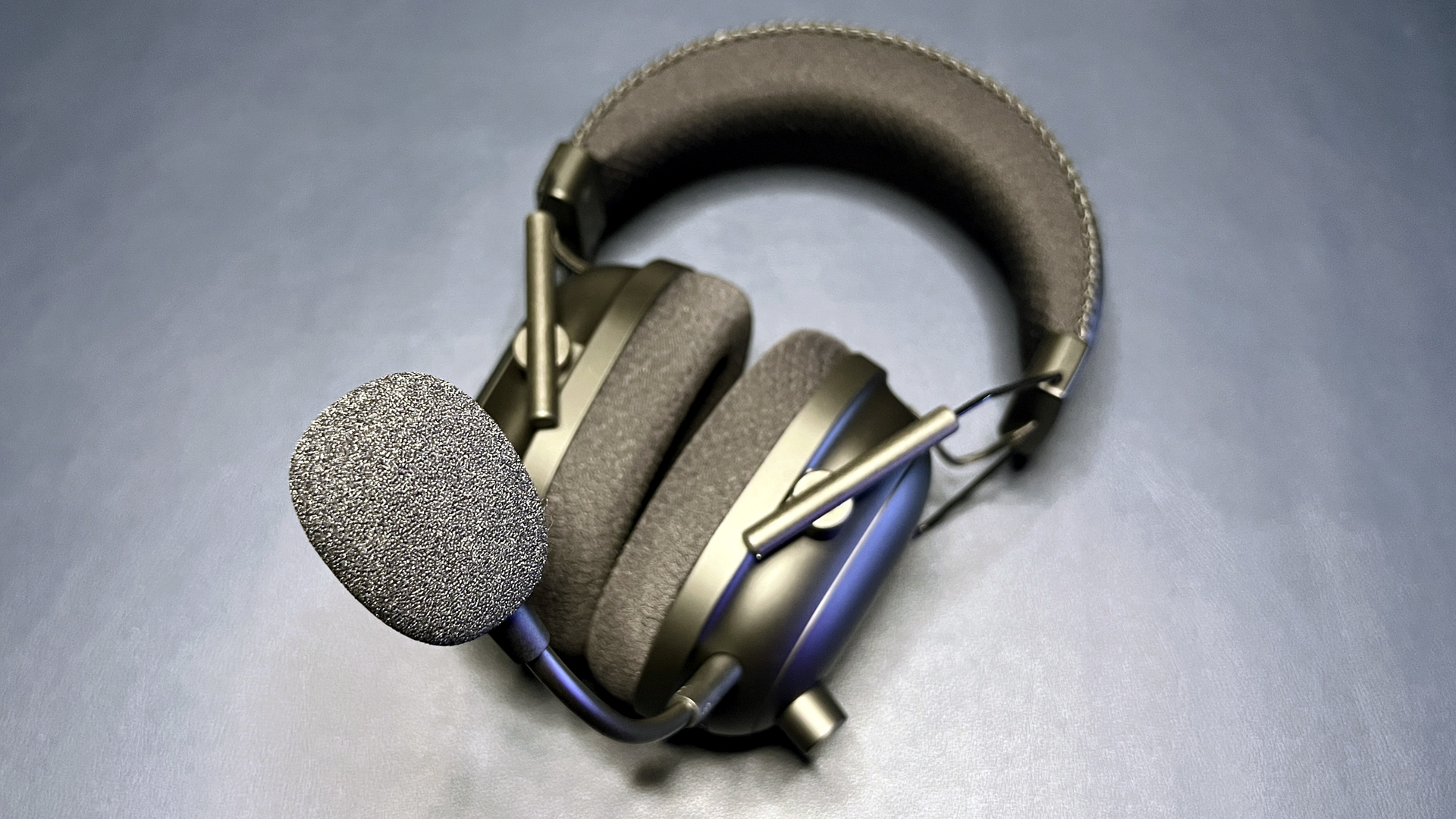
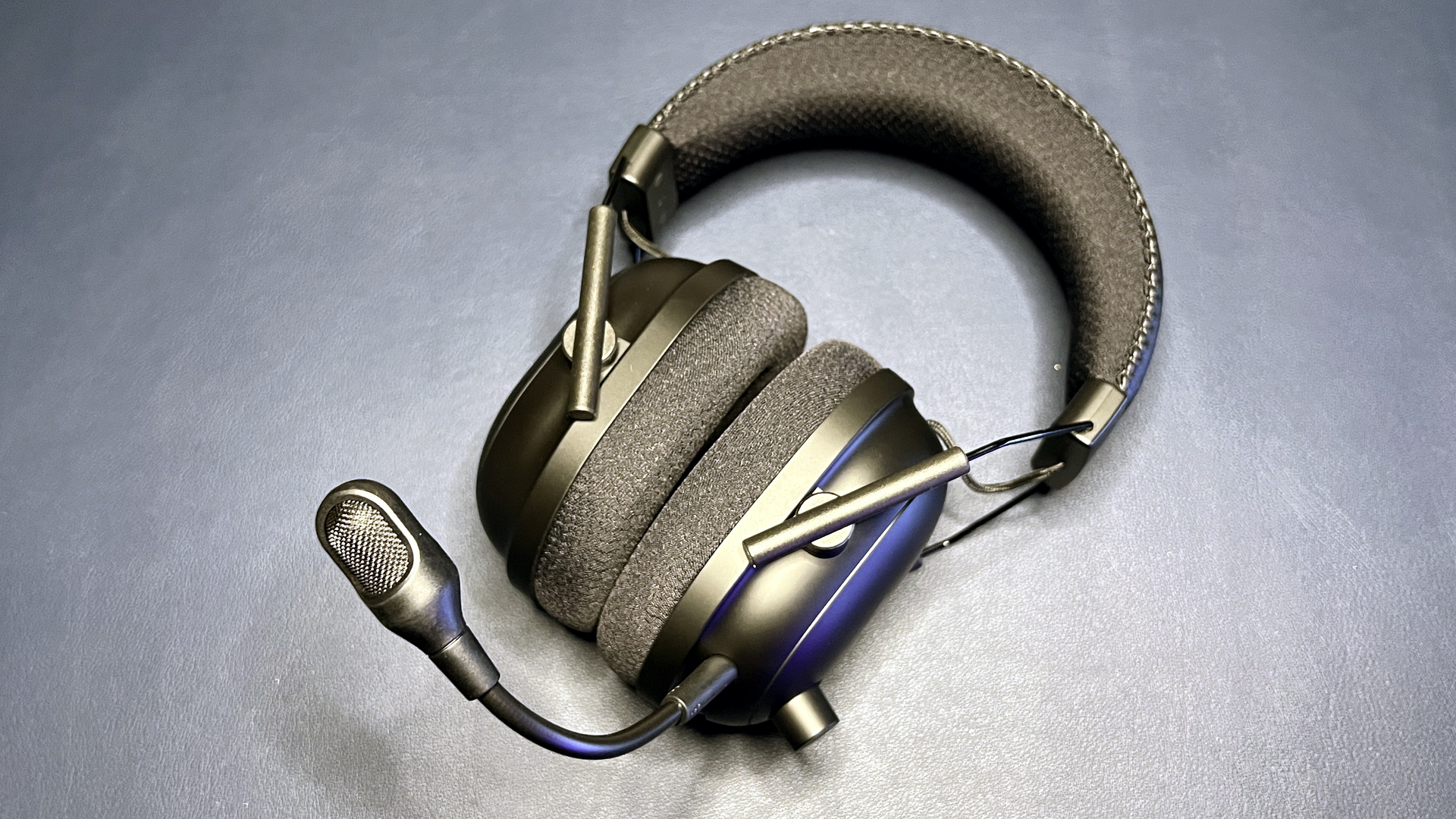
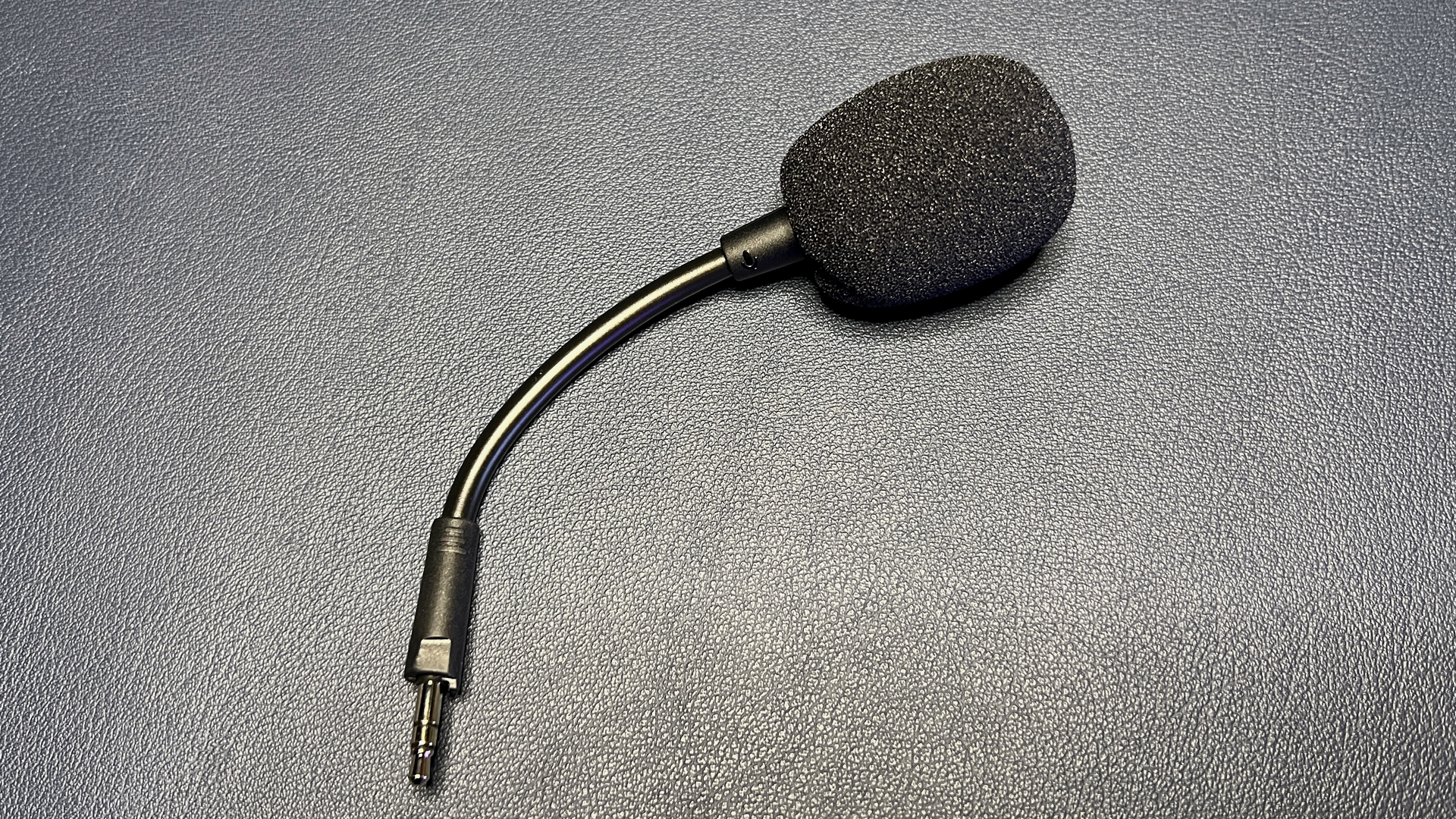
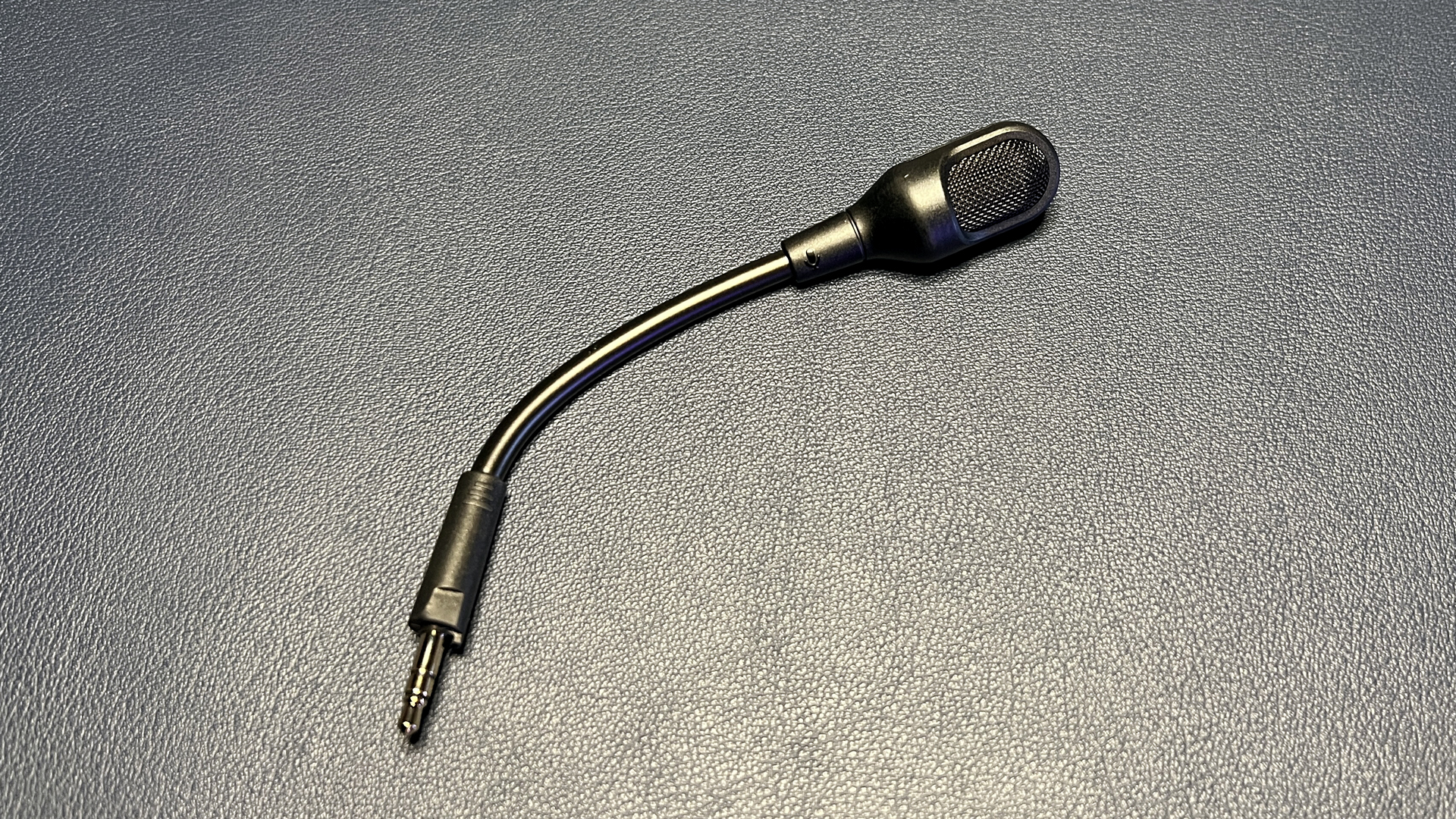
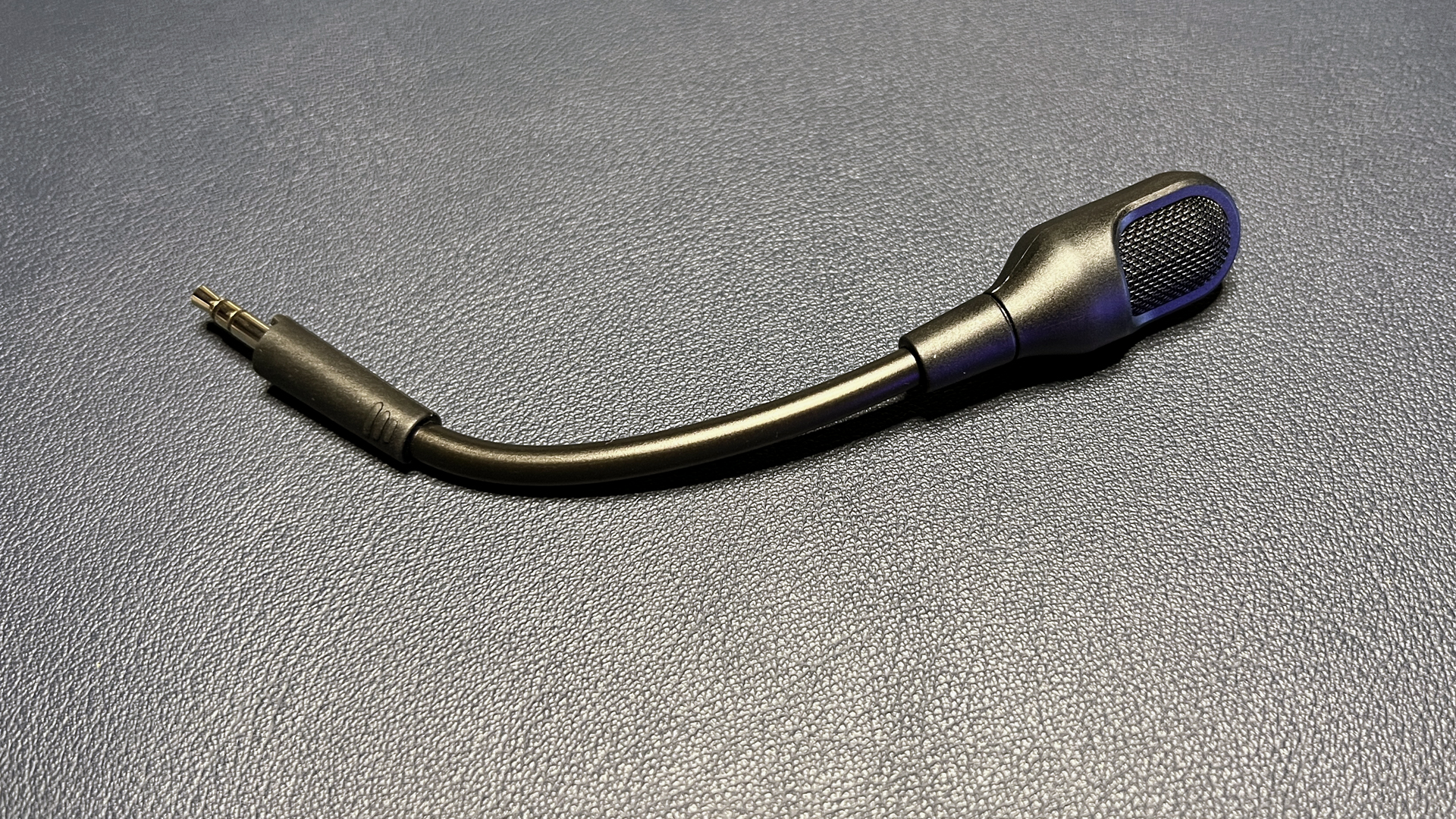
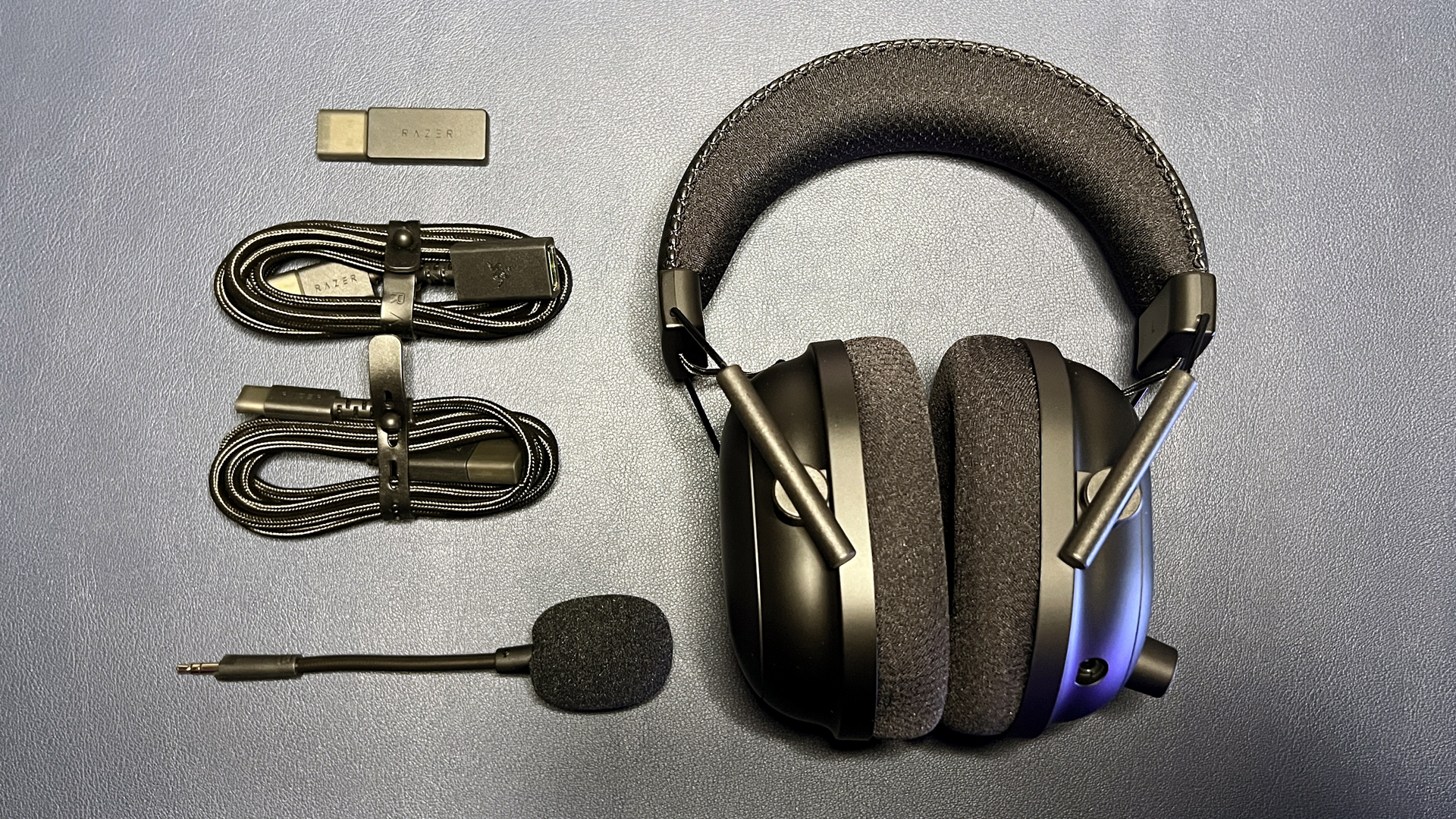
The BlackShark V2 Pro (2023) comes with a detachable boom mic, and it is excellent. It's a 9.9mm condenser mic with a 32 kHz sampling rate and an internal pop filter, and it's the best-sounding headset mic we've tested — in one of our meetings, a coworker said I sounded better over the headset's mic than I did in real life. (Thanks, Andrew.) The headset doesn't have built-in mics, so removing the boom mic mutes you. There's also a mute button on the left earcup, but there's no visual indication that you're muted — and I find it difficult to remember which button state means mute/unmute (in this case, you're muted when the button is pushed in), so it's easier to just detach the mic and know for sure.
The biggest drawback of the BlackShark V2 Pro (2023) is its connectivity — or rather, its lack thereof. Don't get me wrong: it's a wireless headset, and it does offer both low-latency 2.4GHz wireless (via a USB-A dongle) and Bluetooth 5.2. It doesn't offer the simultaneous audio-mixing of the two connections like you'll find on SteelSeries' Arctis Nova 7 or Corsair's Virtuoso RGB Wireless XT; the BlackShark V2 Pro (2023) lets you connect to both 2.4GHz wireless and Bluetooth 5.2 at the same time, but you'll need to switch between the two connections manually using a multi-function button on the right earcup. The headset is also wireless-only. There's no wired connectivity at all — the USB-C port is just for charging. This might be a dealbreaker for some — I thought it would be, for me, but I found that it was actually not a problem as long as I didn't have a device that required a 3.5mm analog connection.
The main reason I look for wired, specifically analog, connections in gaming headsets is because wired connections just work where wired connections often do not — but the BlackShark V2 Pro (2023)'s wireless connections are rock-solid. I haven't had any issues with getting the headset to connect to either of its wireless connections, or switch between the two, so I haven't had the opportunity to wish for an analog connection. The headset also offers excellent battery life — up to 70 hours, which is nearly three times that of its predecessor — and can be used wirelessly while plugged in and charging, so you shouldn't run into a situation where you need to stop and charge in the middle of playing. Plugging the headset in may not be quite as convenient as swapping out the battery in the SteelSeries Arctis Nova Pro, because it does mean you'll be tethered to a USB port for a little while, but it's not too bad.
The BlackShark V2 Pro (2023) isn't the most versatile gaming headset you can buy, but it's excellent for gaming — especially PC gaming. It's lightweight and incredibly comfortable, with a game-tuned audio profile and a mic that's practically standalone quality, and while it's wireless-only, it at least does wireless very, very well. As long as you're not concerned with having a wired connection, this is the best headset for most PC gamers.
Read: Razer BlackShark V2 Pro (2023) review
Best Budget Gaming Headset
Specifications
Reasons to buy
Reasons to avoid
You don't need to spend a lot for a great gaming headset. HyperX's Cloud III isn't the most feature-rich headset on the market, but it does the basics — balanced, detailed audio, a lightweight, comfortable frame, and a detachable boom mic — very well. And it's priced at a relatively budget-friendly $100.
Unlike the BlackShark V2 Pro (2023), the Cloud III is a wired-only headset — it can connect to your PC via USB-C, and it also offers an 3.5mm analog connection. HyperX offers two wireless versions of the Cloud III: the Cloud III Wireless, which is very similar to the Cloud III but only offers 2.4GHz wireless connectivity and costs $170; and the Cloud III Wireless S, which features both 2.4GHz wireless and Bluetooth connectivity and built-in mics (in addition to the detachable boom mic) and costs $180.
The Cloud III is one of the most comfortable headsets I've tested. Actually, I'll just go ahead and say it: it's the most comfortable headset I've tested (the BlackShark V2 Pro (2023) is a close second, however). It weighs 10.86 ounces (308g) and has a leatherette-covered padded headband, aluminum forks that curve toward the earcups, and leatherette-covered memory foam earpads. It also somehow has the perfect clamping force — light enough that you'll forget you're wearing a headset, but not so light that it falls off your head whenever you look up (or down).

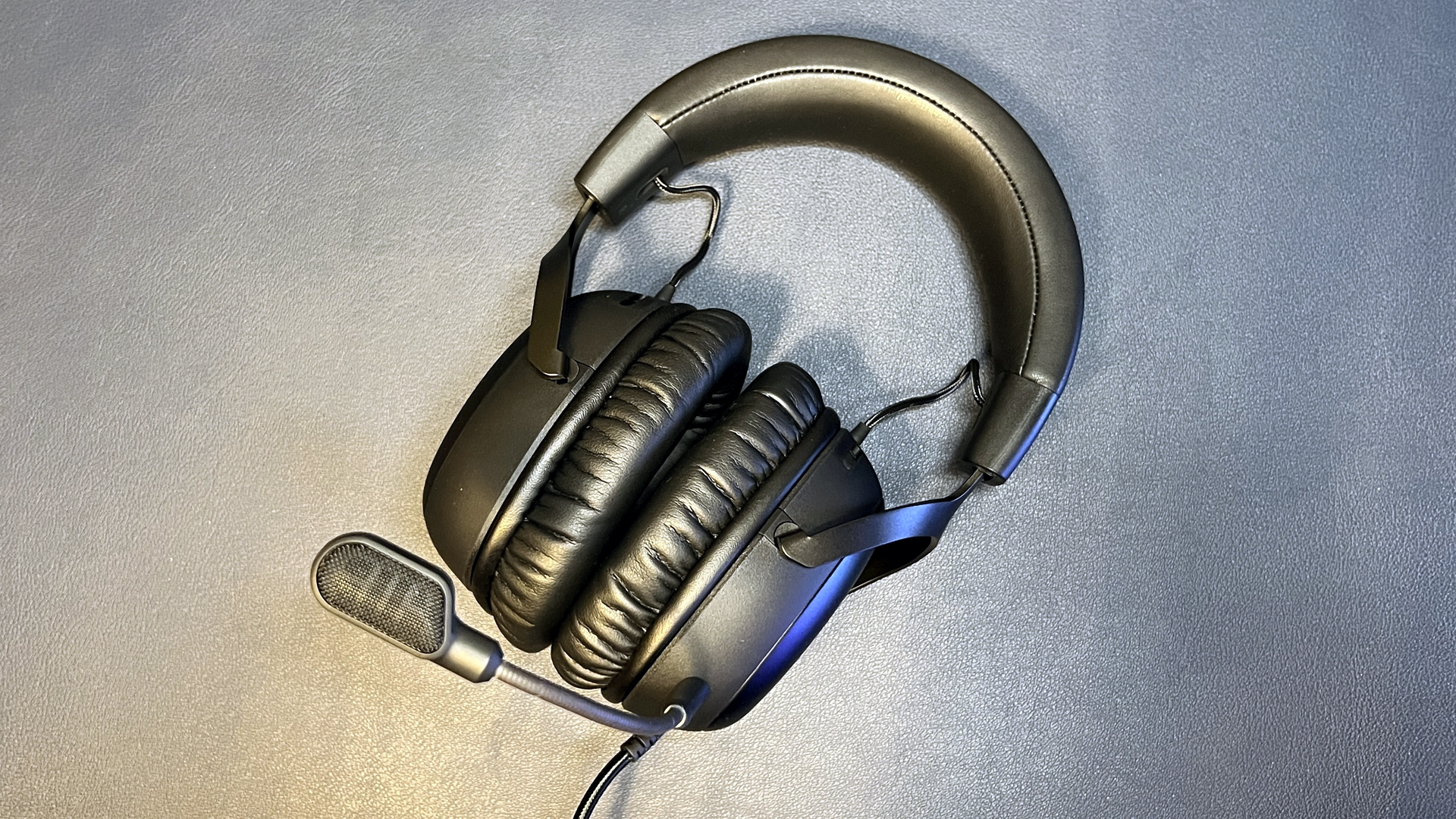
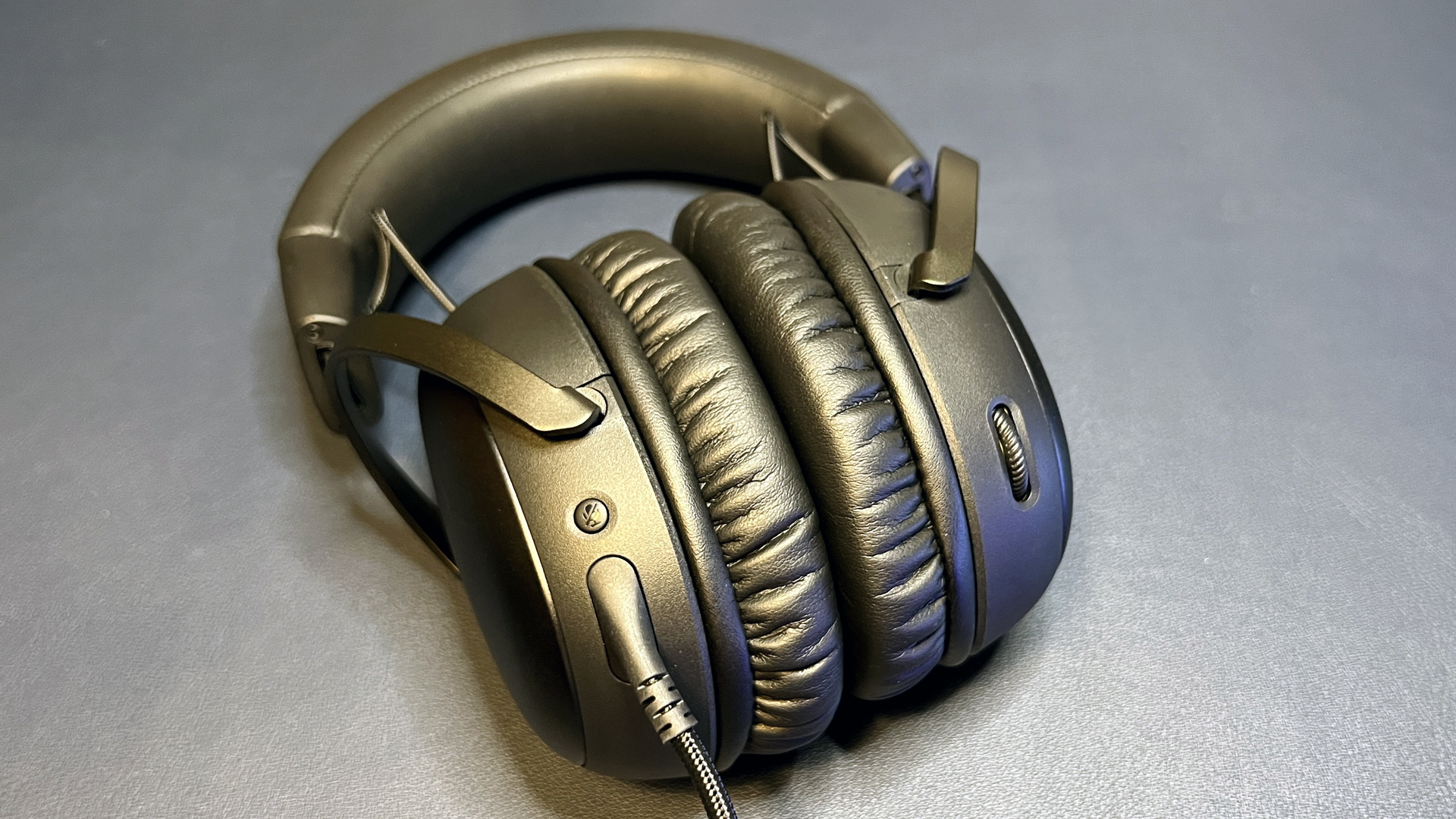
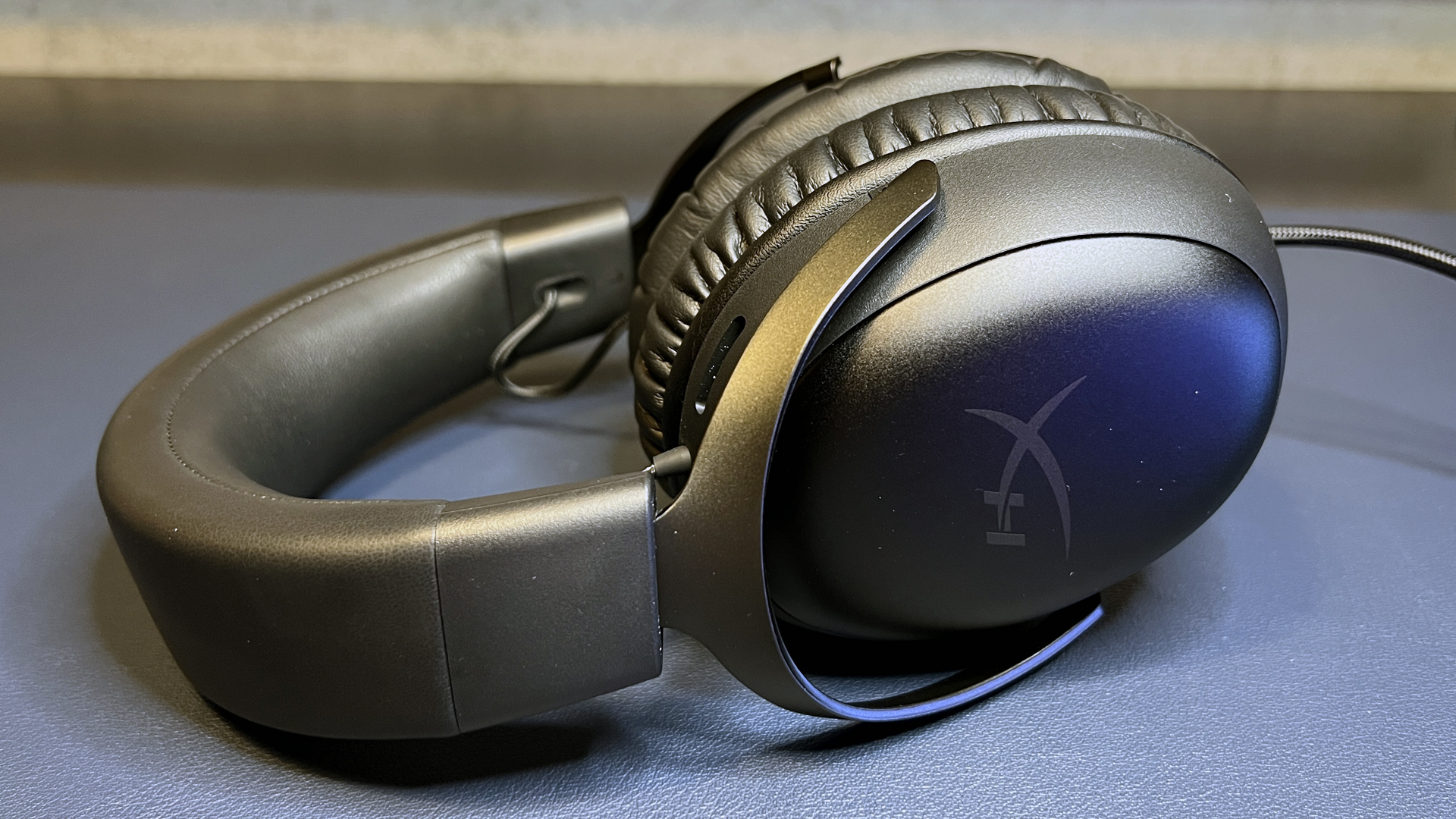
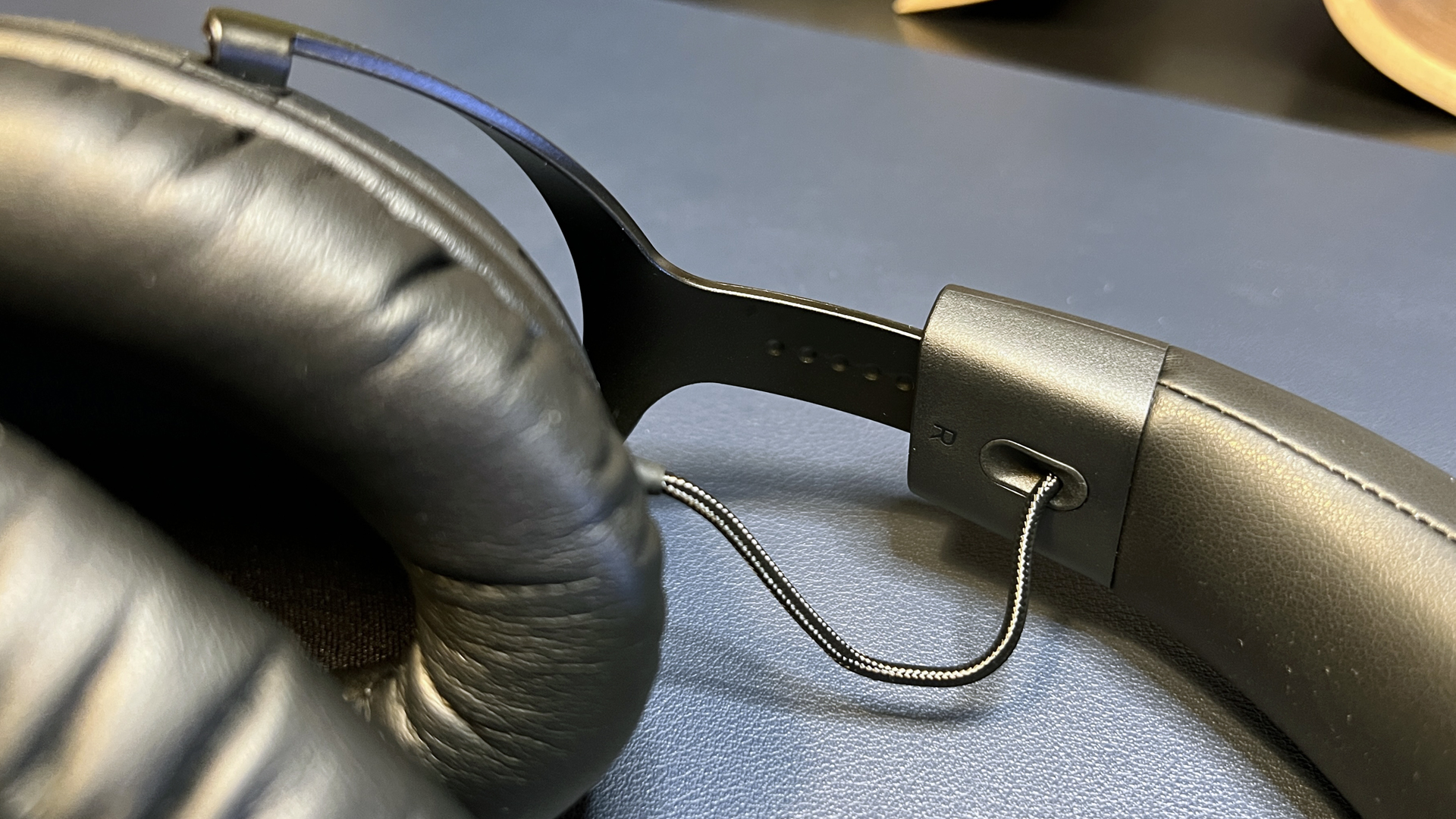
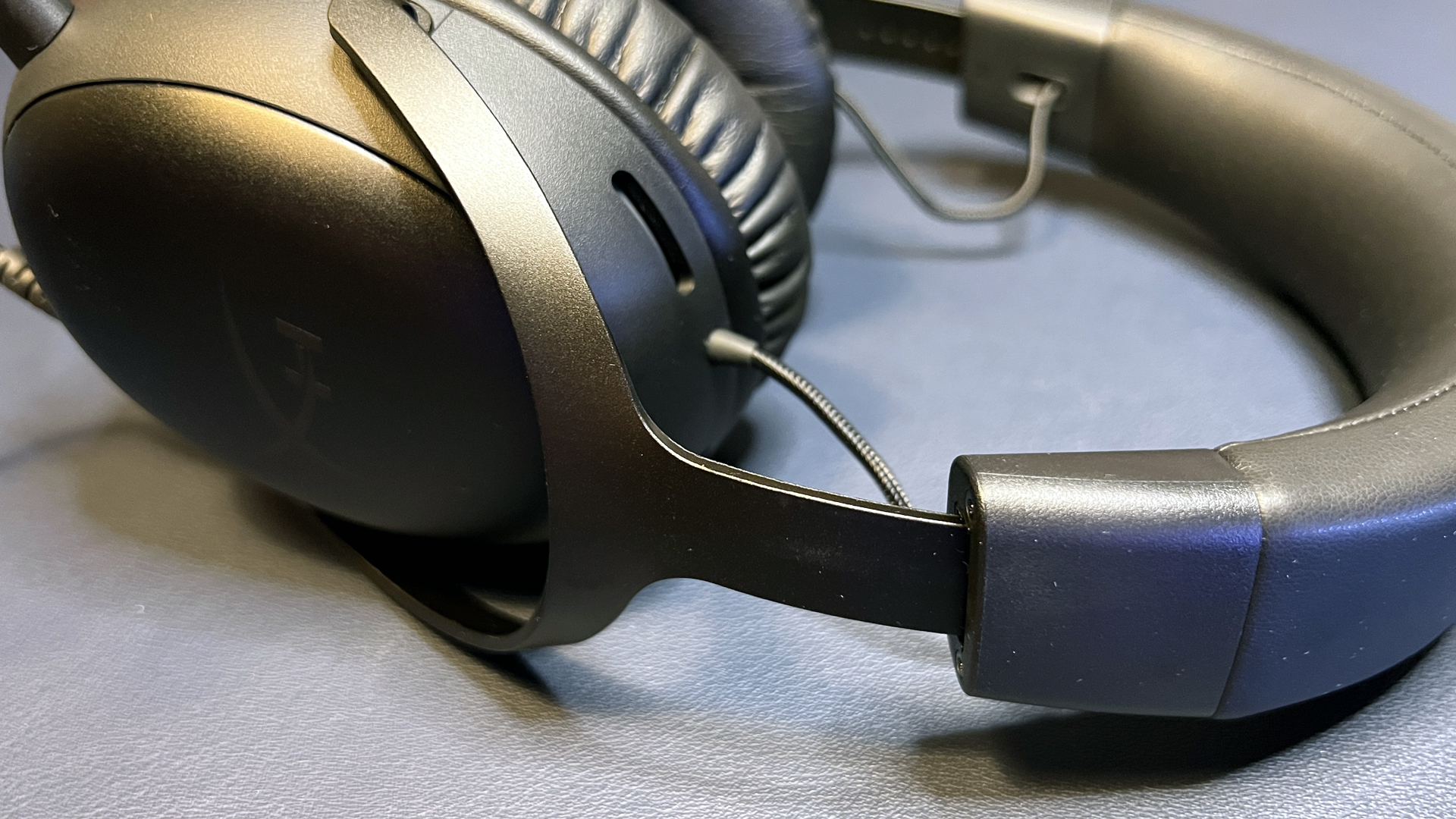
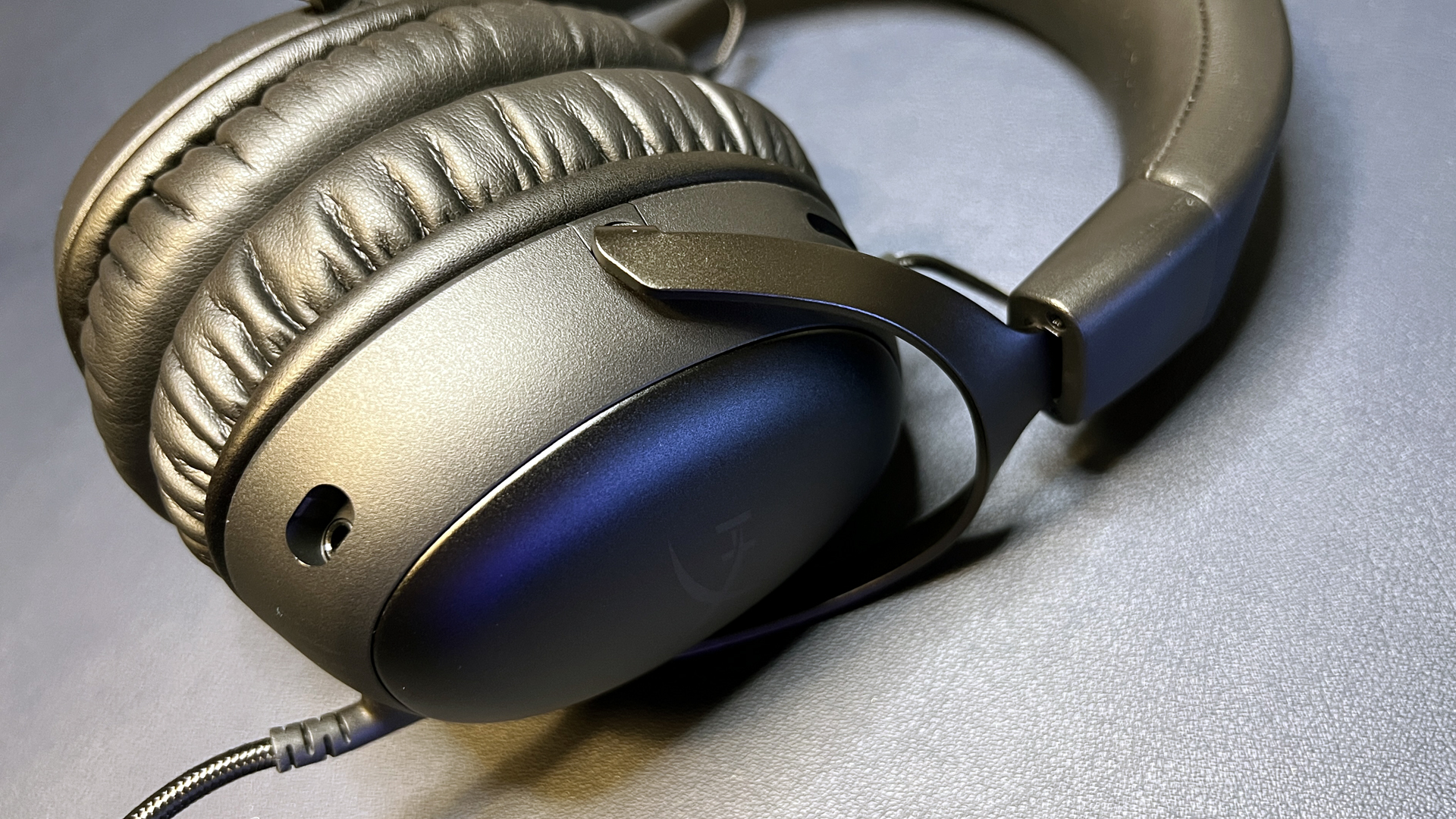
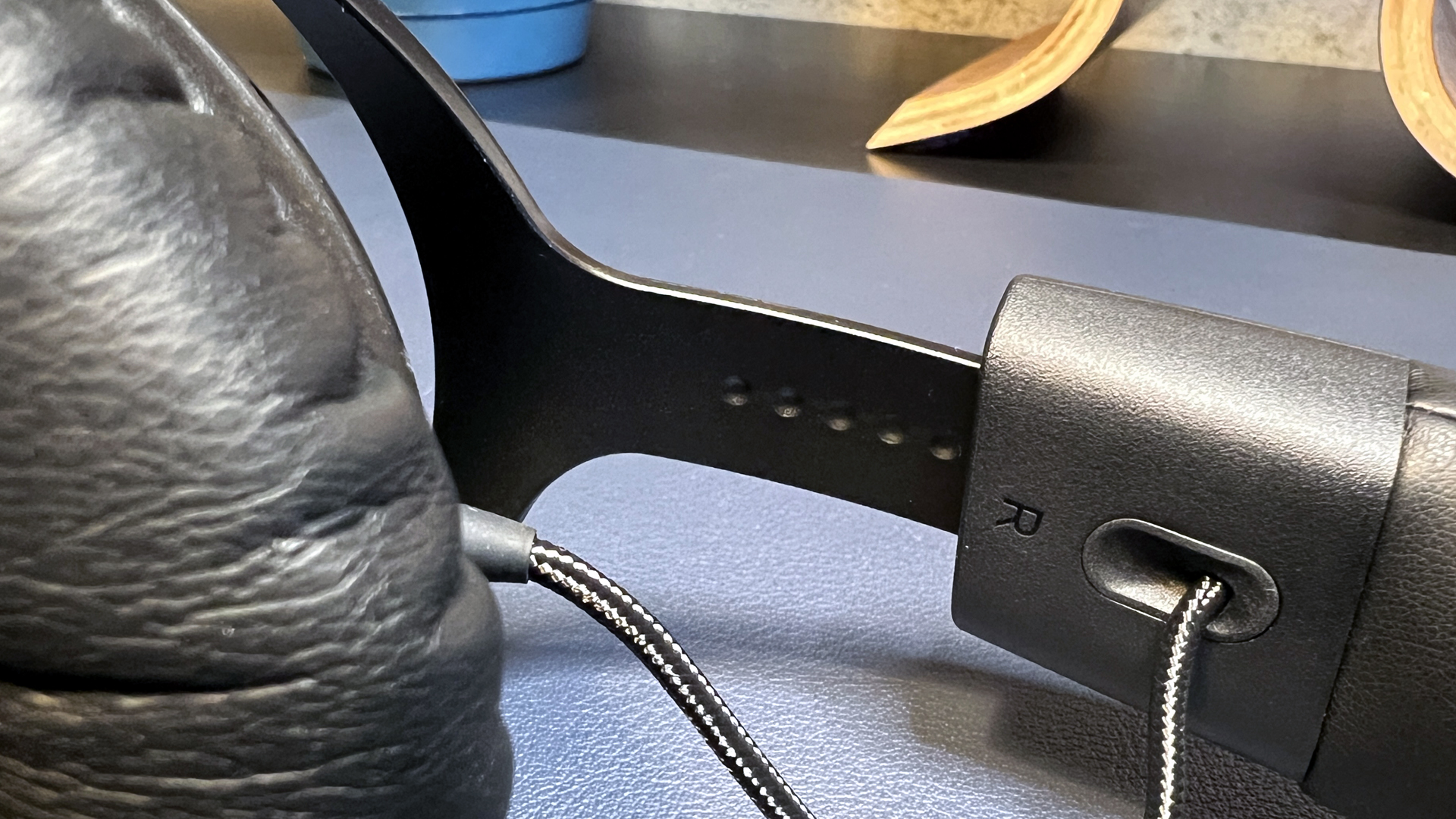
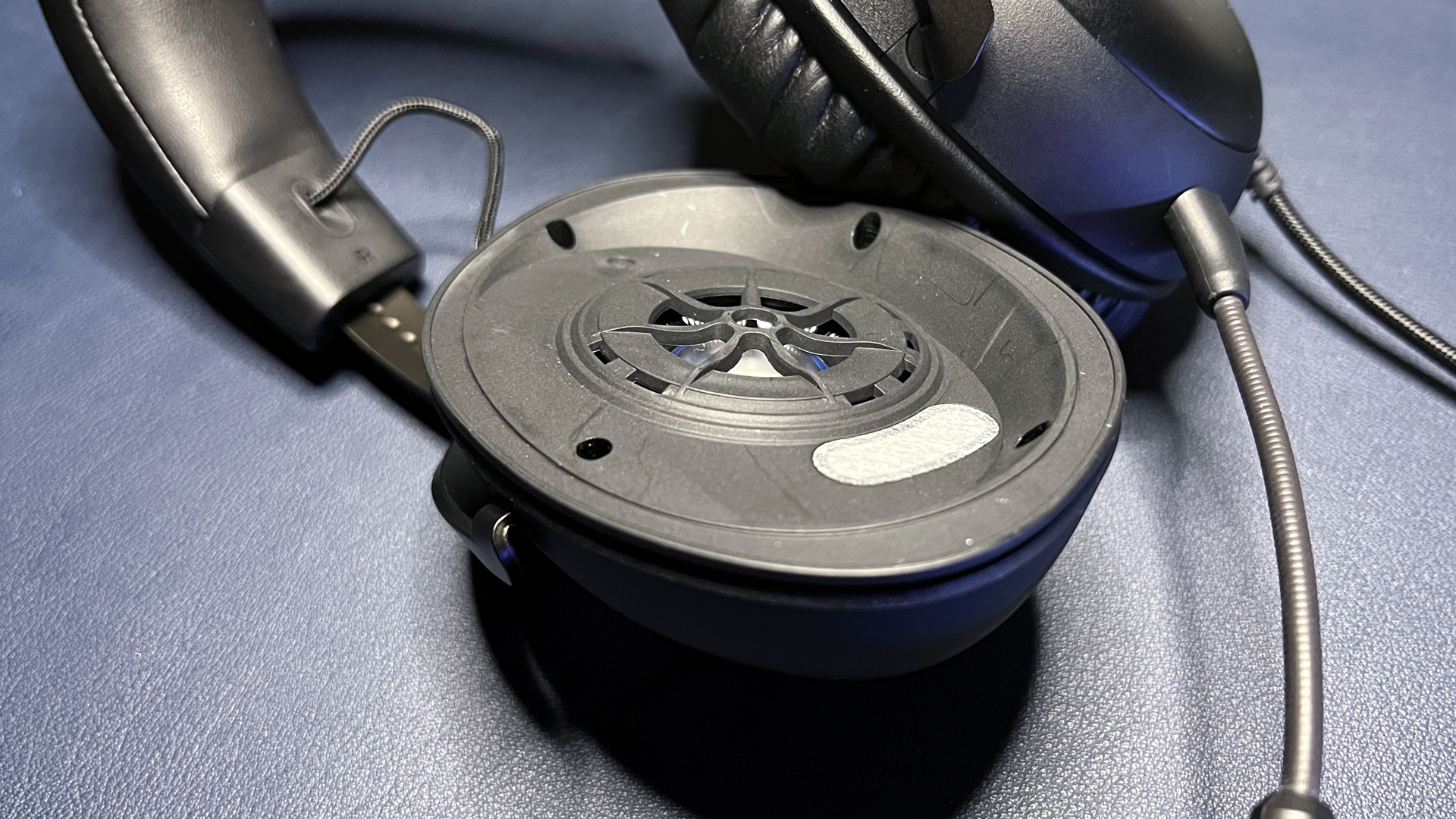
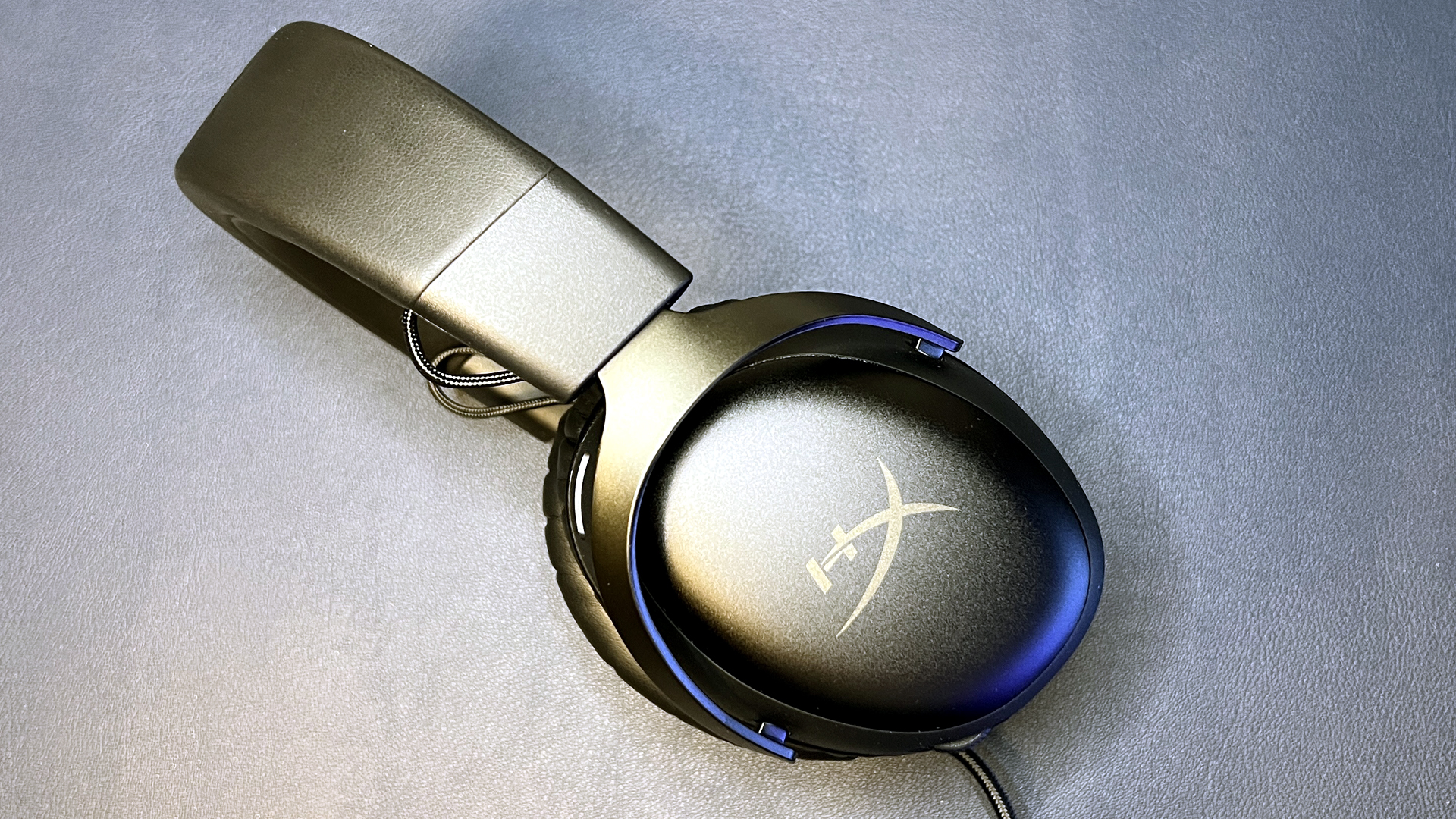
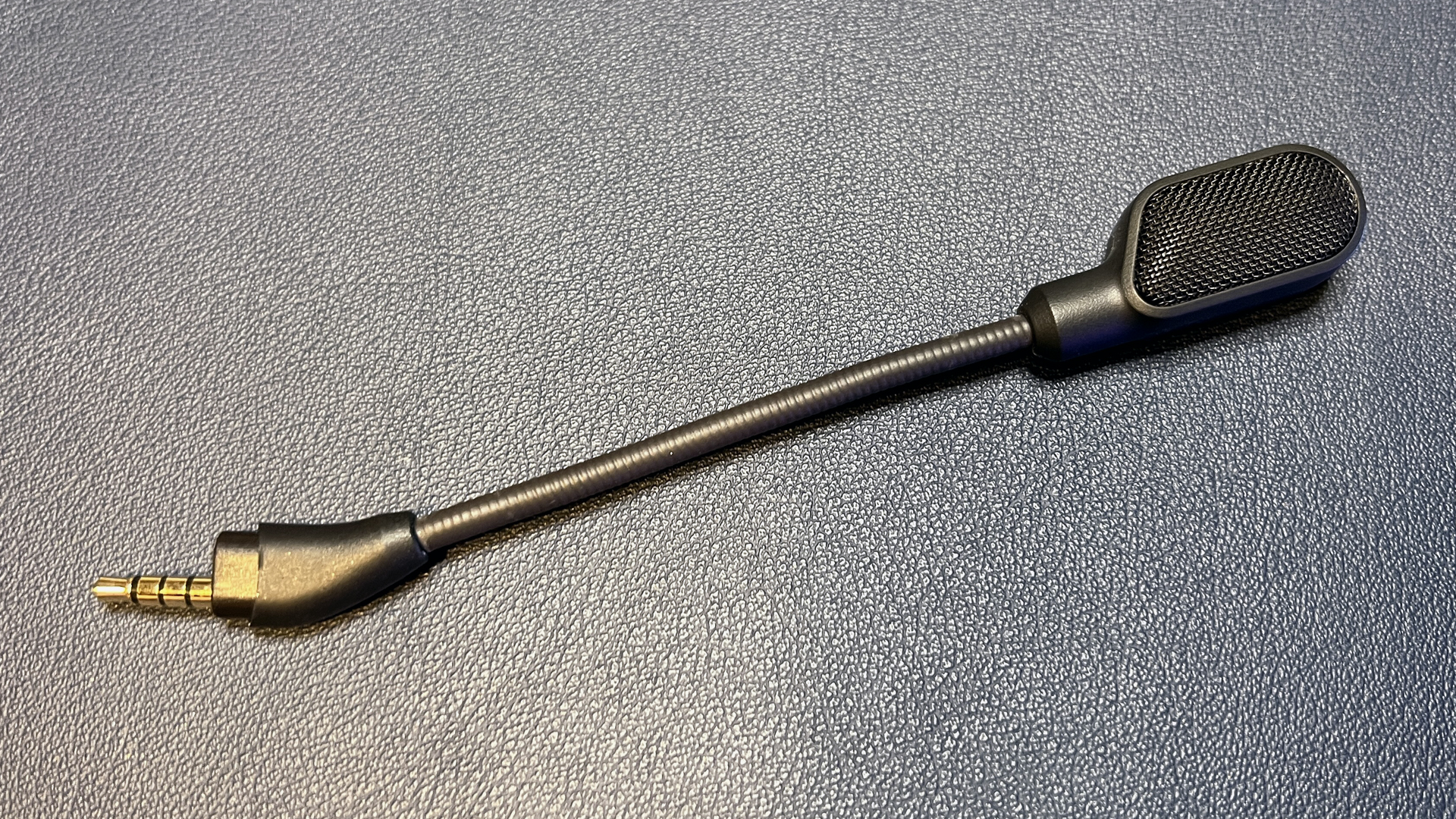
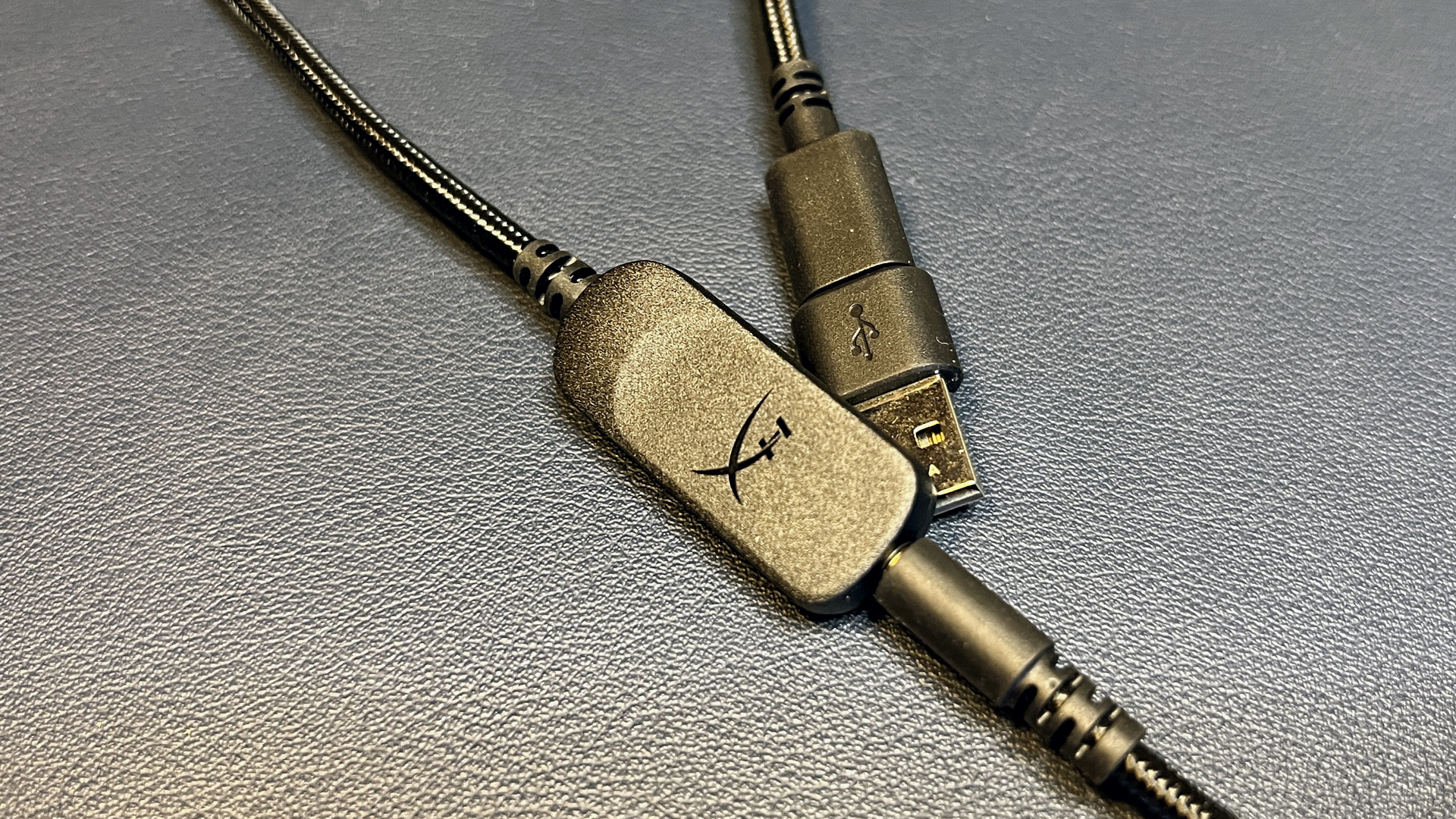
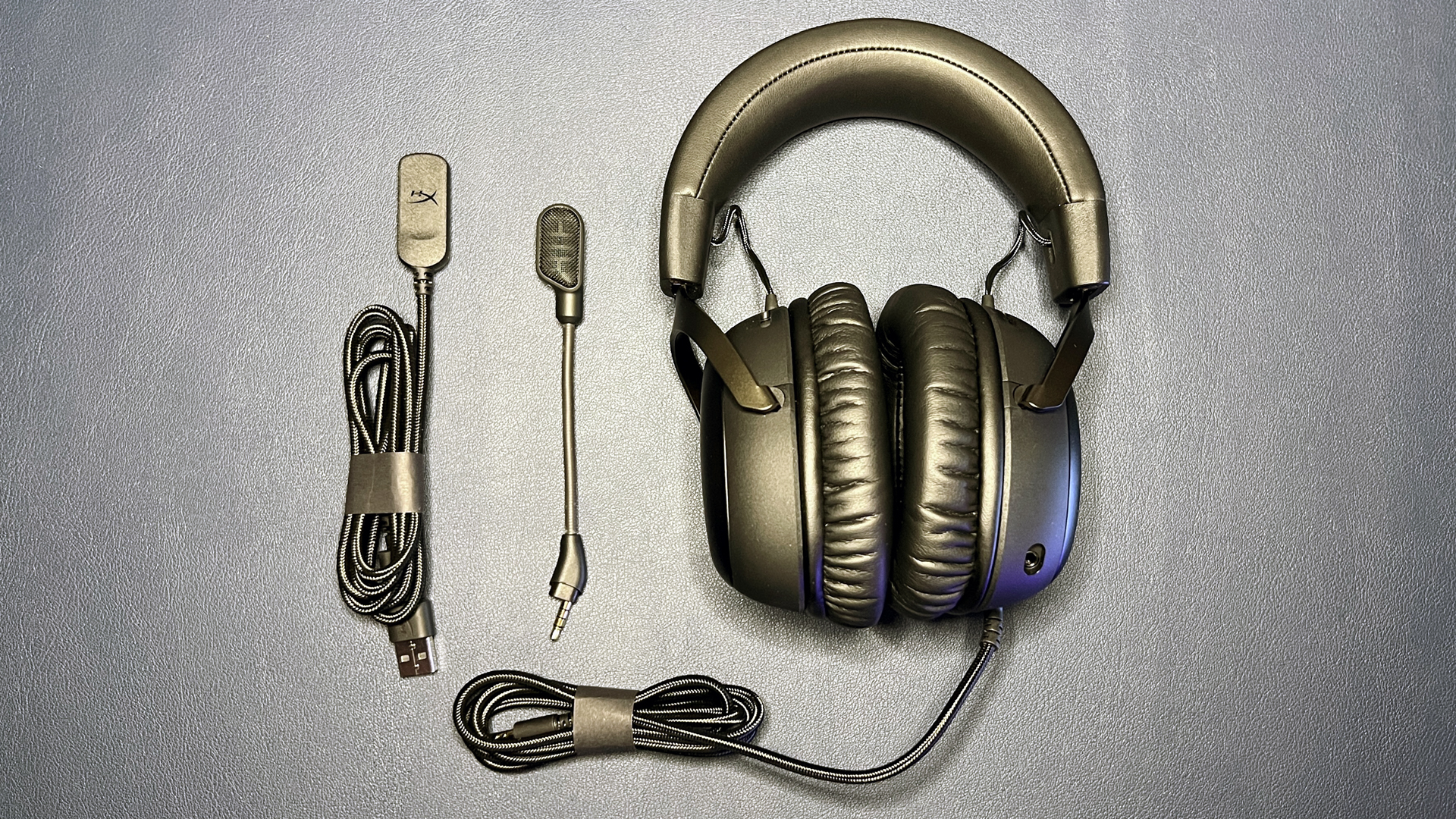
This is the eight-years-in-the-making successor to HyperX's popular Cloud II headset, and it's an excellent update — but it's also mostly just an update. It sports the same 53mm dynamic drivers as the Cloud II, though they've been redesigned and angled to deliver "accurate, smooth, and detailed sound by directing audio into the ears at a more optimal position." The drivers have a frequency response range of 10 - 21,000 Hz, and offer a balanced audio profile with impressive bass and solid gaming performance. The headset has DTS surround sound when connected via USB-C to your PC, but it's very subtle (maybe too subtle) — however, directional sound is good and there's plenty of environmental detail in games like God of War: Ragnarok and Uncharted 4.
The Cloud III has a detachable boom mic with a built-in mesh pop filter that sounds... fine. That might sound like a bad thing, but it's not — most gaming headsets don't have the impressive mic quality of the BlackShark V2 Pro (2023), which is why it's always a good idea to pair your headset with one of the best gaming microphones. The Cloud III's boom mic is about what I expect from a headset mic — it made my voice sound better than if I was trying to talk through my webcam mic or a built-in laptop mic and it did a good job of removing background noise, but it wasn't anywhere near broadcast quality.
If you're looking for a headset that does the basics — well — and won't break the bank, the HyperX Cloud III is a great choice. It's still the most comfortable headset I've ever tested, and it offers great audio, a decent mic, and a solid, wired connection (and it actually has two forms of wired connectivity, which is more than most wired headsets). If you're looking for something even cheaper than $100, the $60 SteelSeries Arctis Nova 1 is a wired (analog-only) headset that's also very lightweight and comfortable, with great audio and a retractable boom mic.
Read: HyperX Cloud III review
Best Gaming Headset for Audiophiles
Specifications
Reasons to buy
Reasons to avoid
Here's the thing about PC gaming headsets: audio quality matters, but so do a lot of other things. That doesn't mean audio quality isn't the most important facet — it is — just that there are so many other factors to consider when picking a gaming headset that it often ends up being (somewhat) sidelined. But if you're a gamer who's looking for top-notch audio quality above all else, the Audeze Maxwell is the best gaming headset for you.
The Maxwell is a large, wireless over-ear headset with a steel and aluminum frame and a detachable boom mic. It features Audeze's newly-designed 90mm planar magnetic drivers — which are different from dynamic drivers and have a frequency response range of 10 - 50,000 Hz (much wider than that of a typical gaming headset, which is usually between 20 - 20,000 Hz). There aren't many gaming headsets with planar magnetic drivers, but there are a few, including Audeze's LCD-GX and HyperX's Cloud Orbit S.
The Maxwell's default sound profile is tuned for gaming, so it's a little unbalanced, with stronger lows and brighter highs than you're probably looking for in a listening headset. You can, however, use Audeze's software (Audeze HQ) to adjust the EQ for a fantastic-sounding, balanced audio profile that's clean, crisp, and full of detail. I might be a little biased as I've always been a big fan of planar magnetic drivers, but it's hard to beat the accuracy and detail they deliver — especially at this price point ($300 - $329, depending on which version you buy).
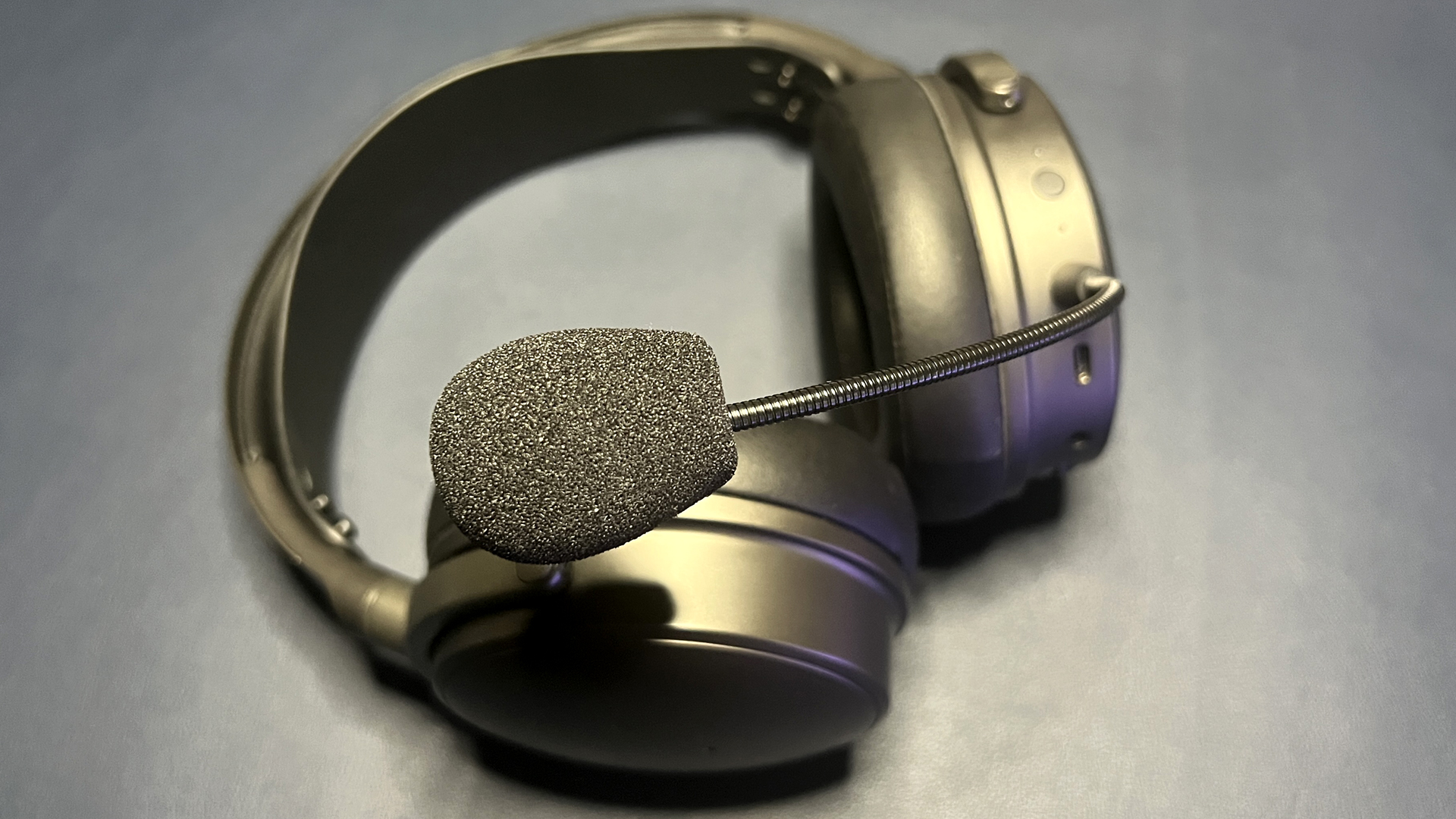
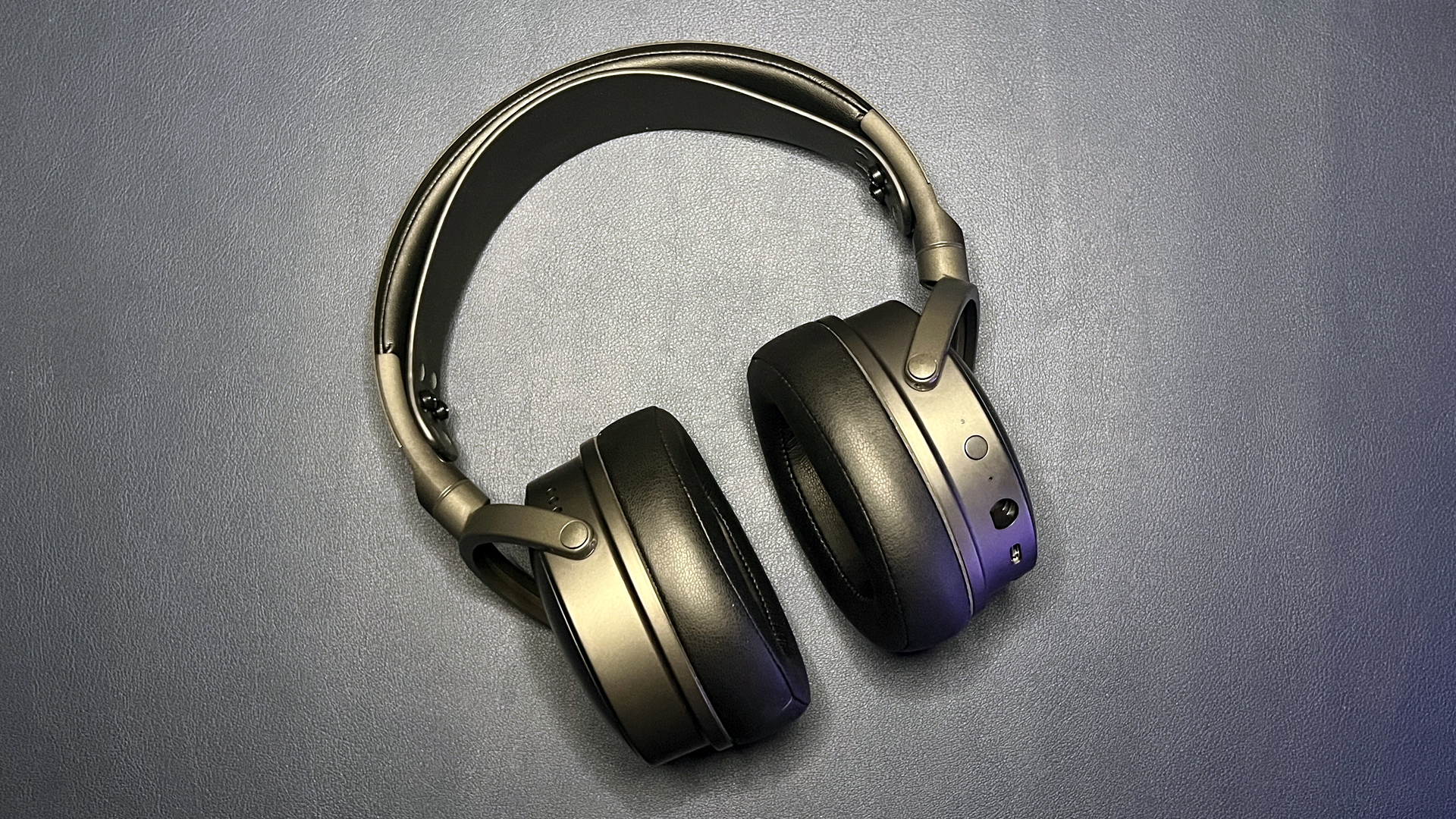
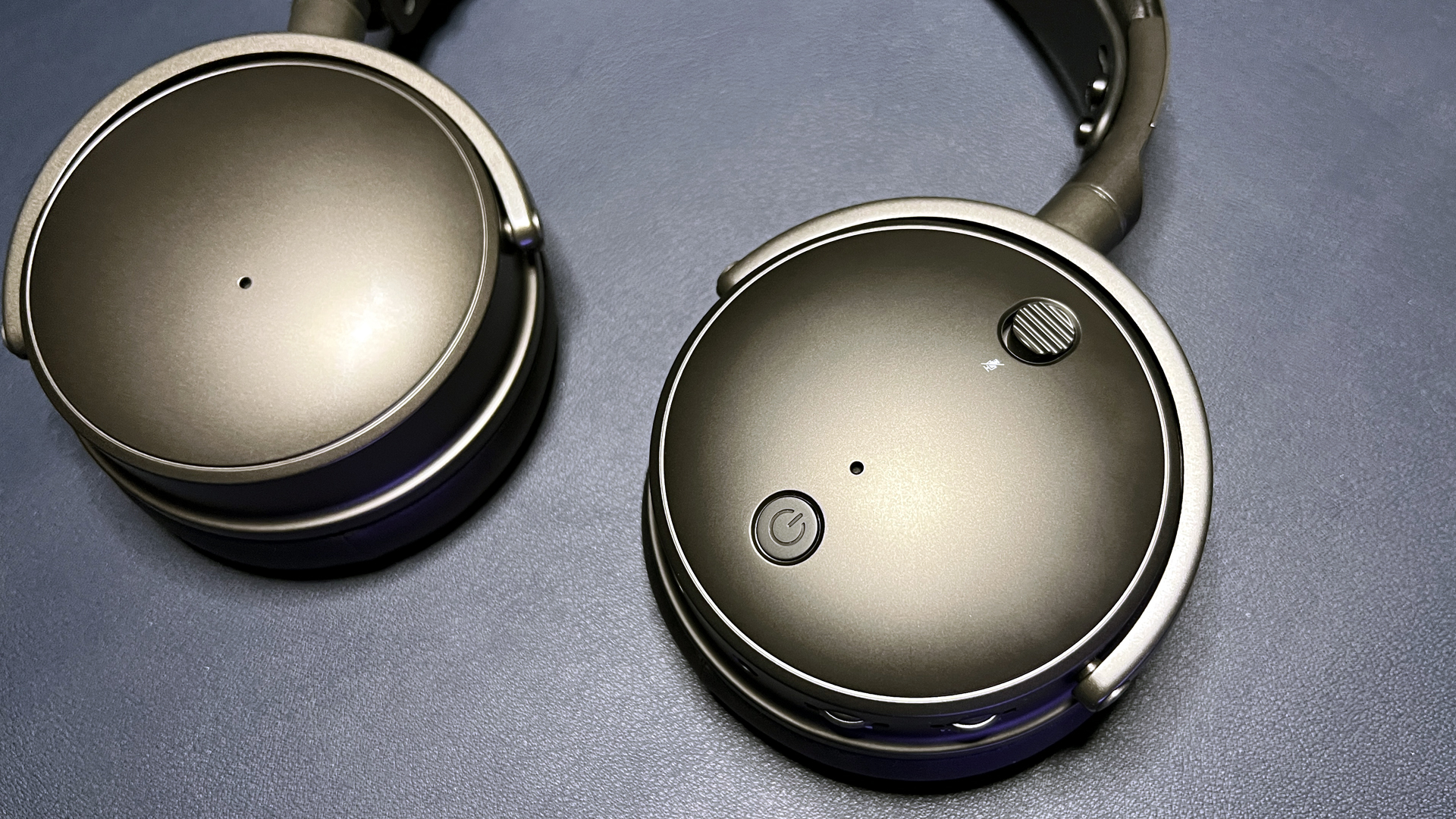
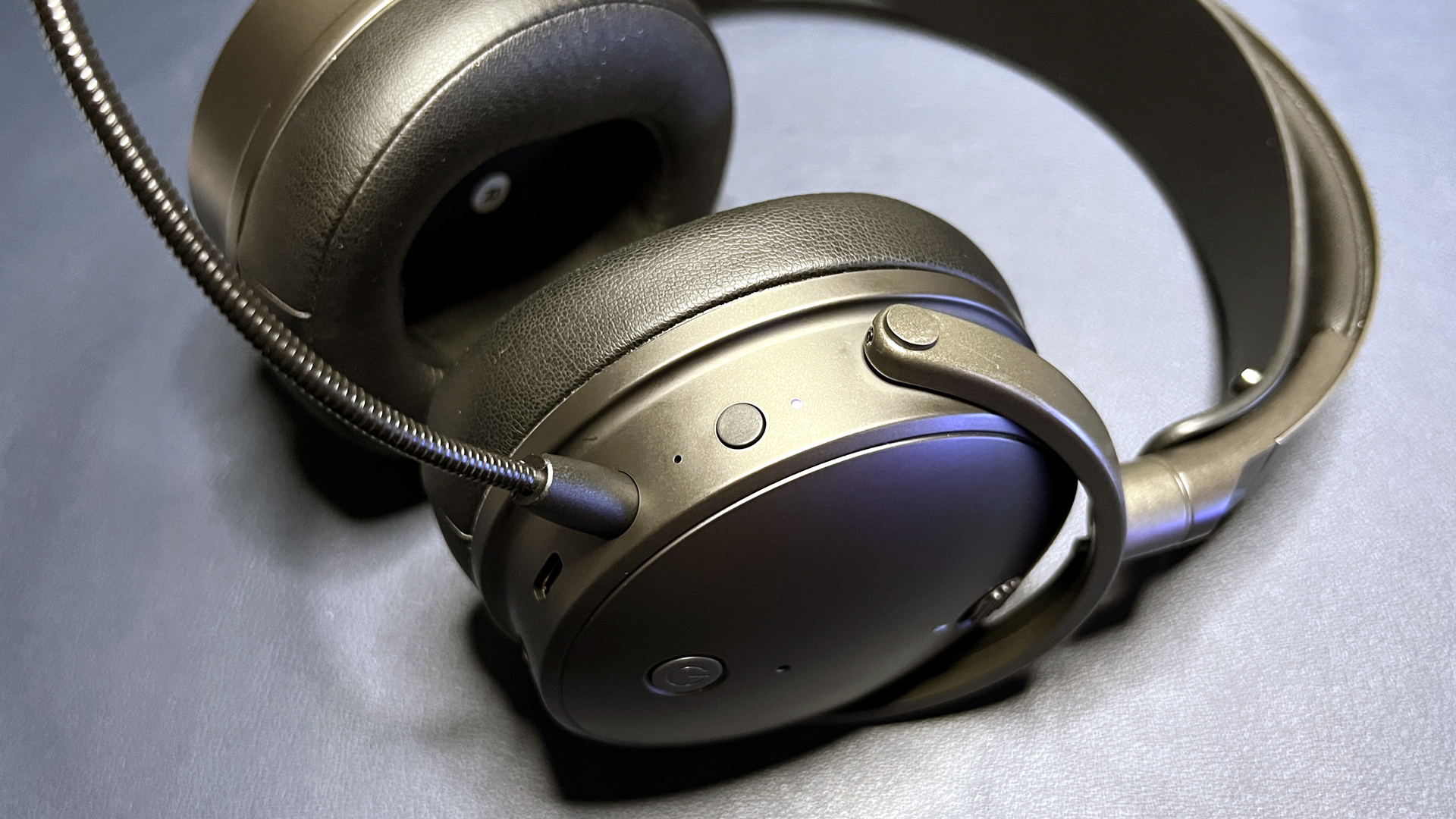
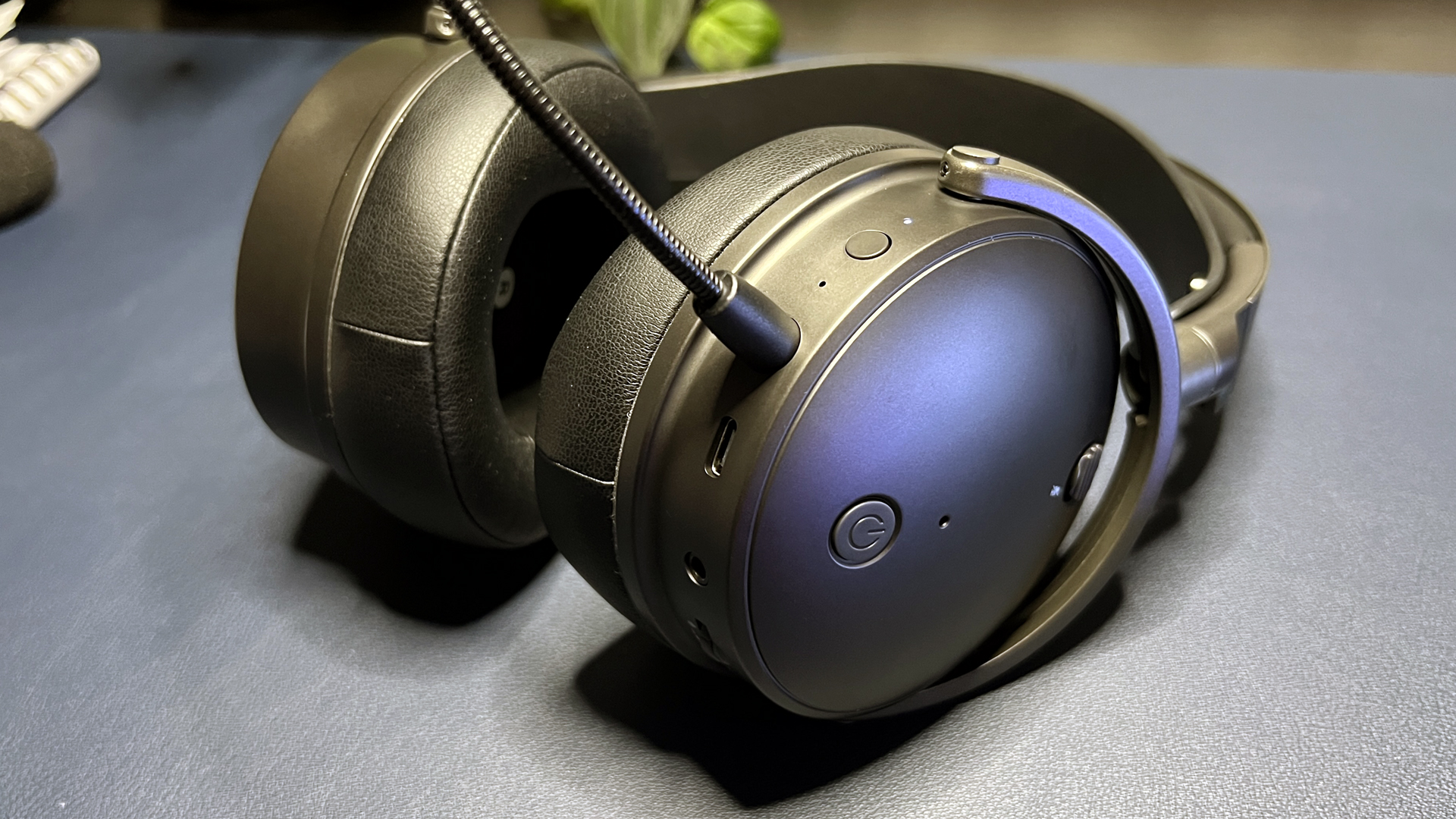
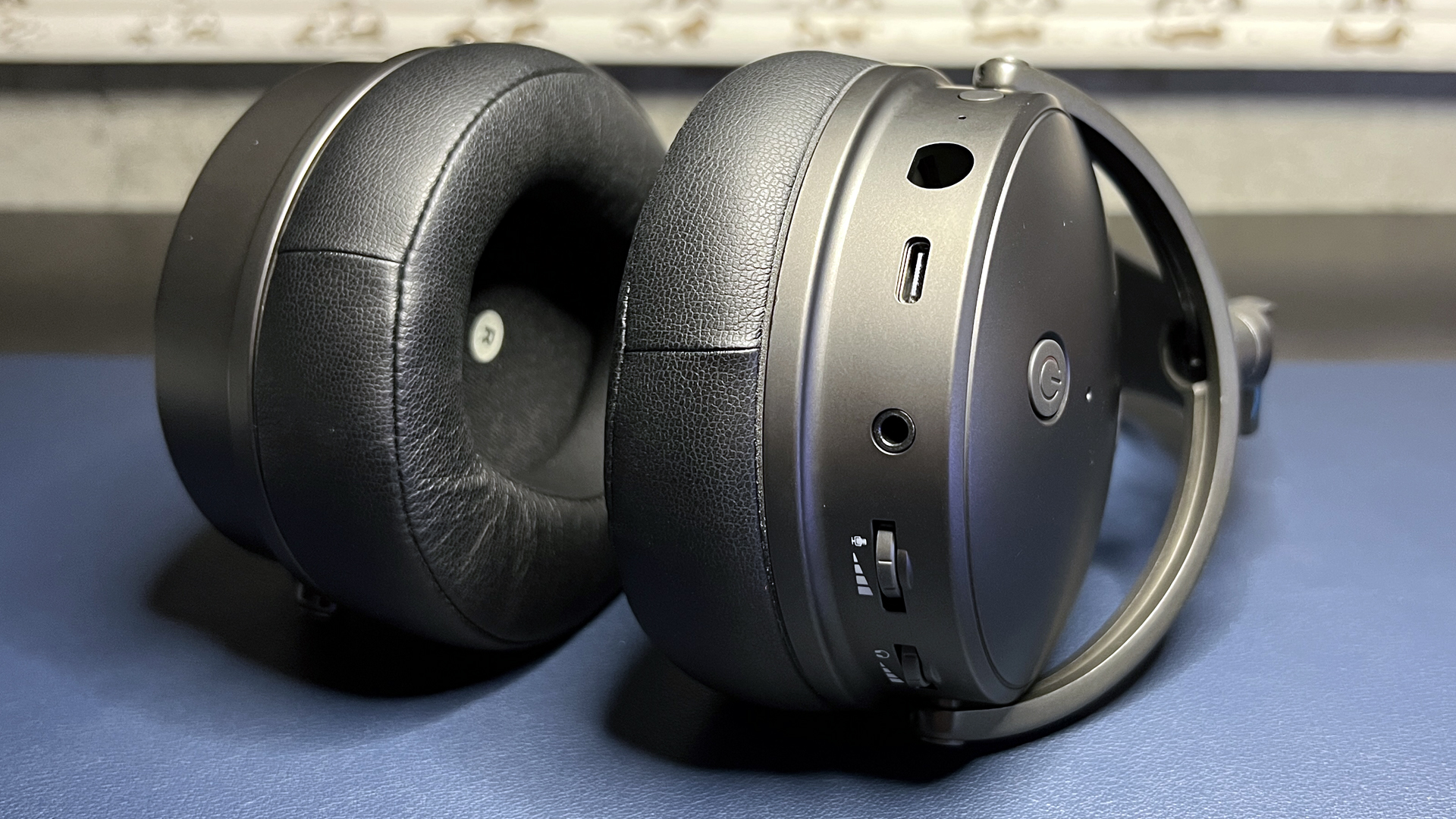
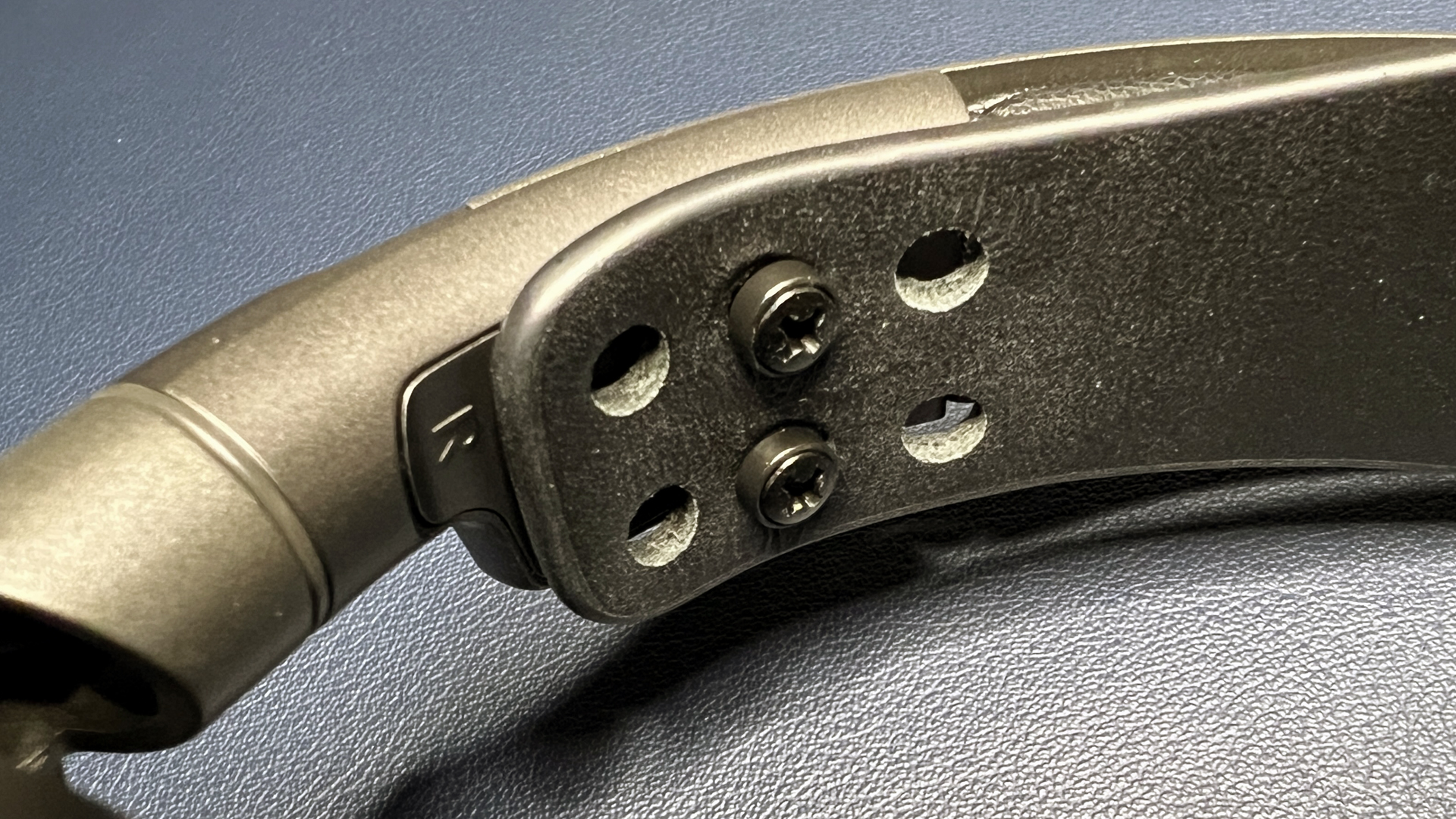
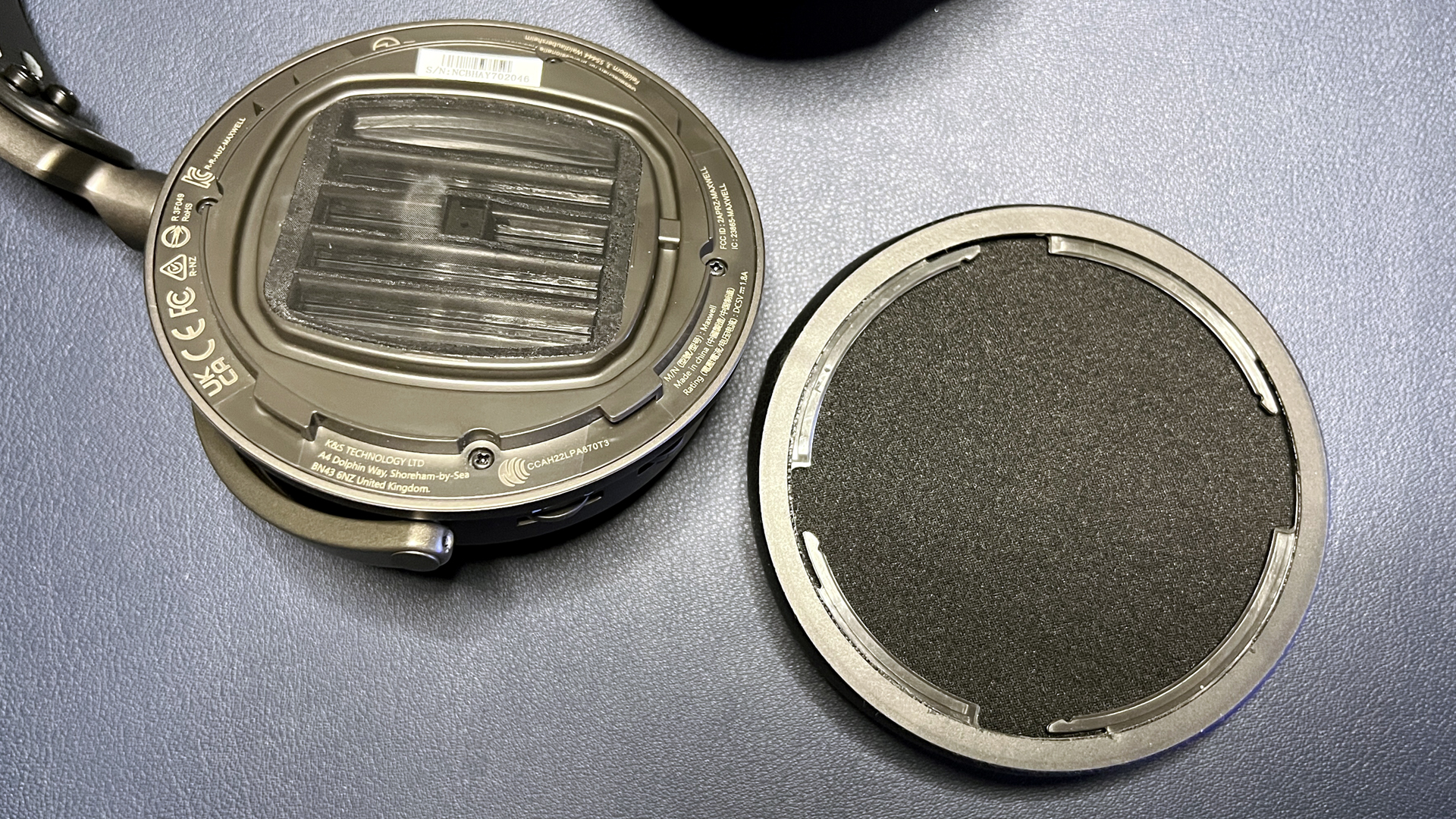
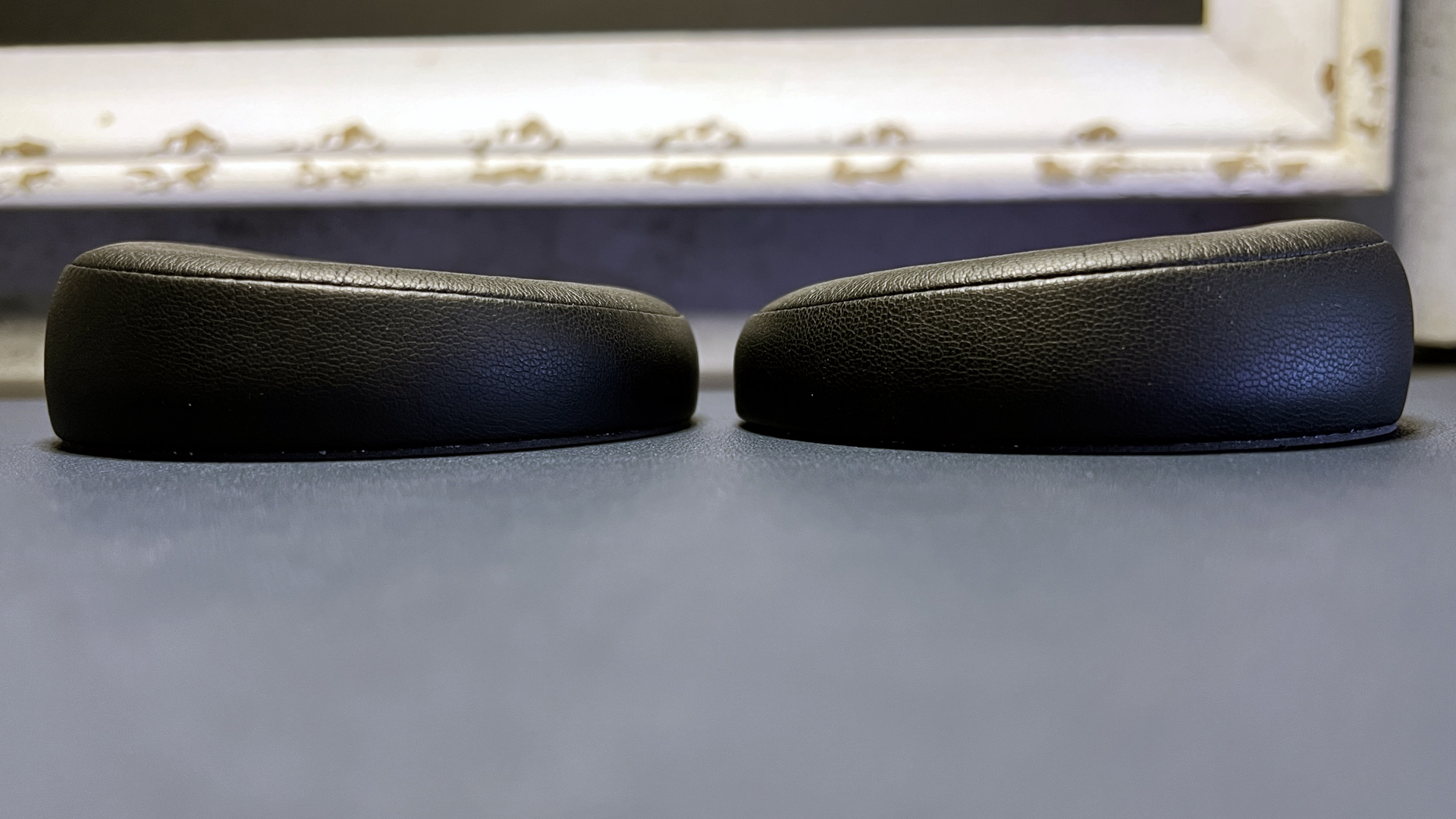
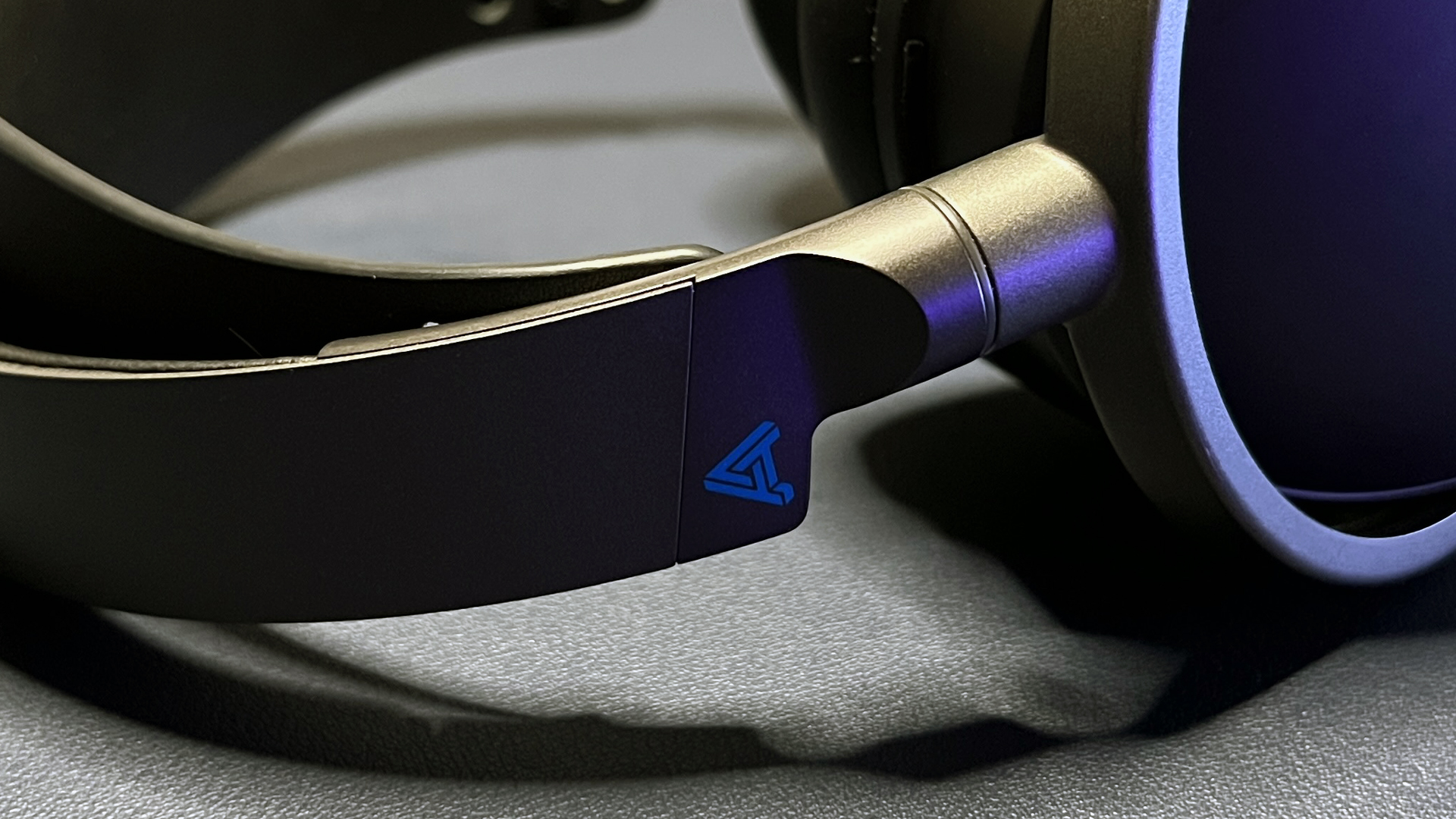
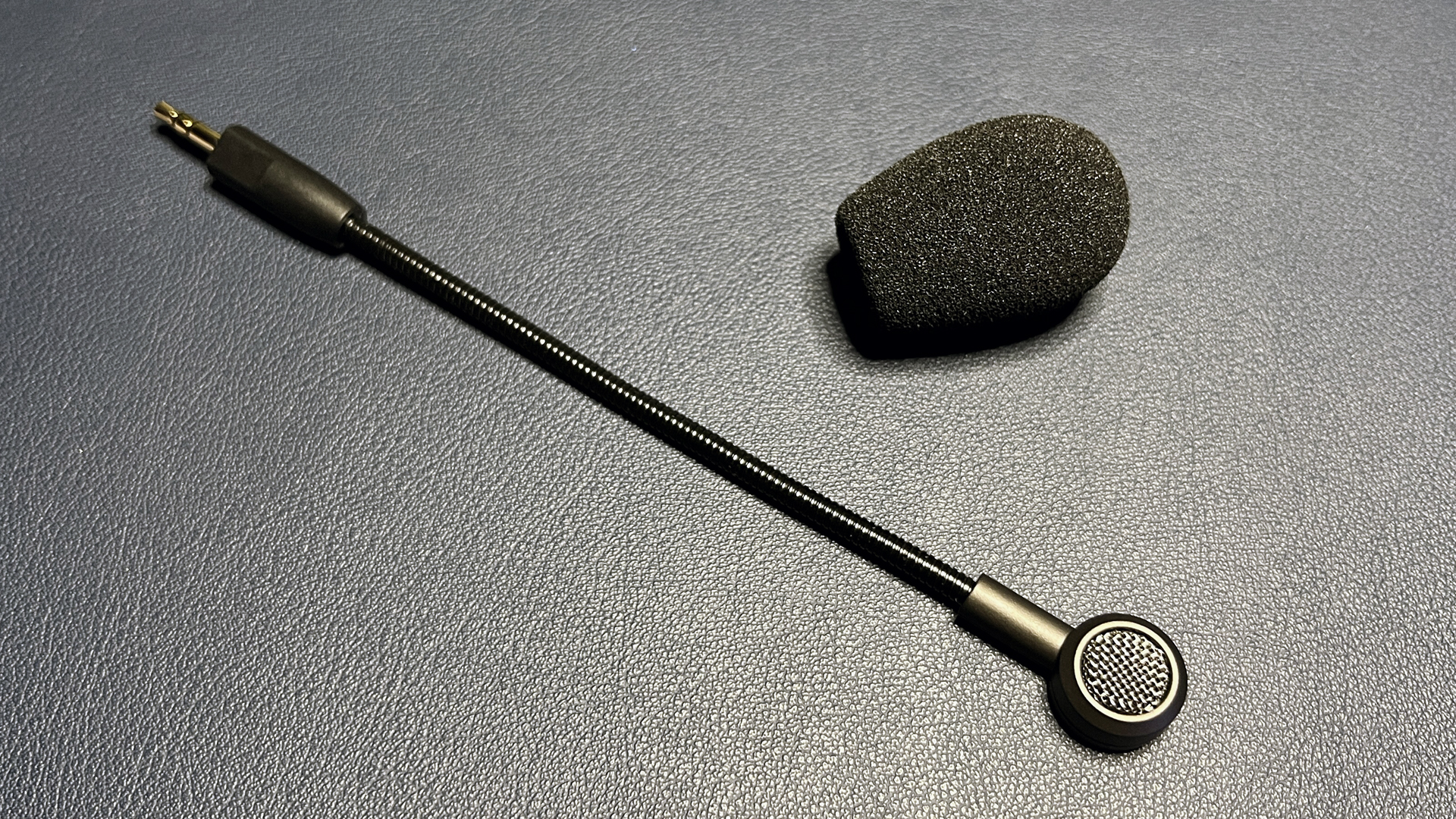
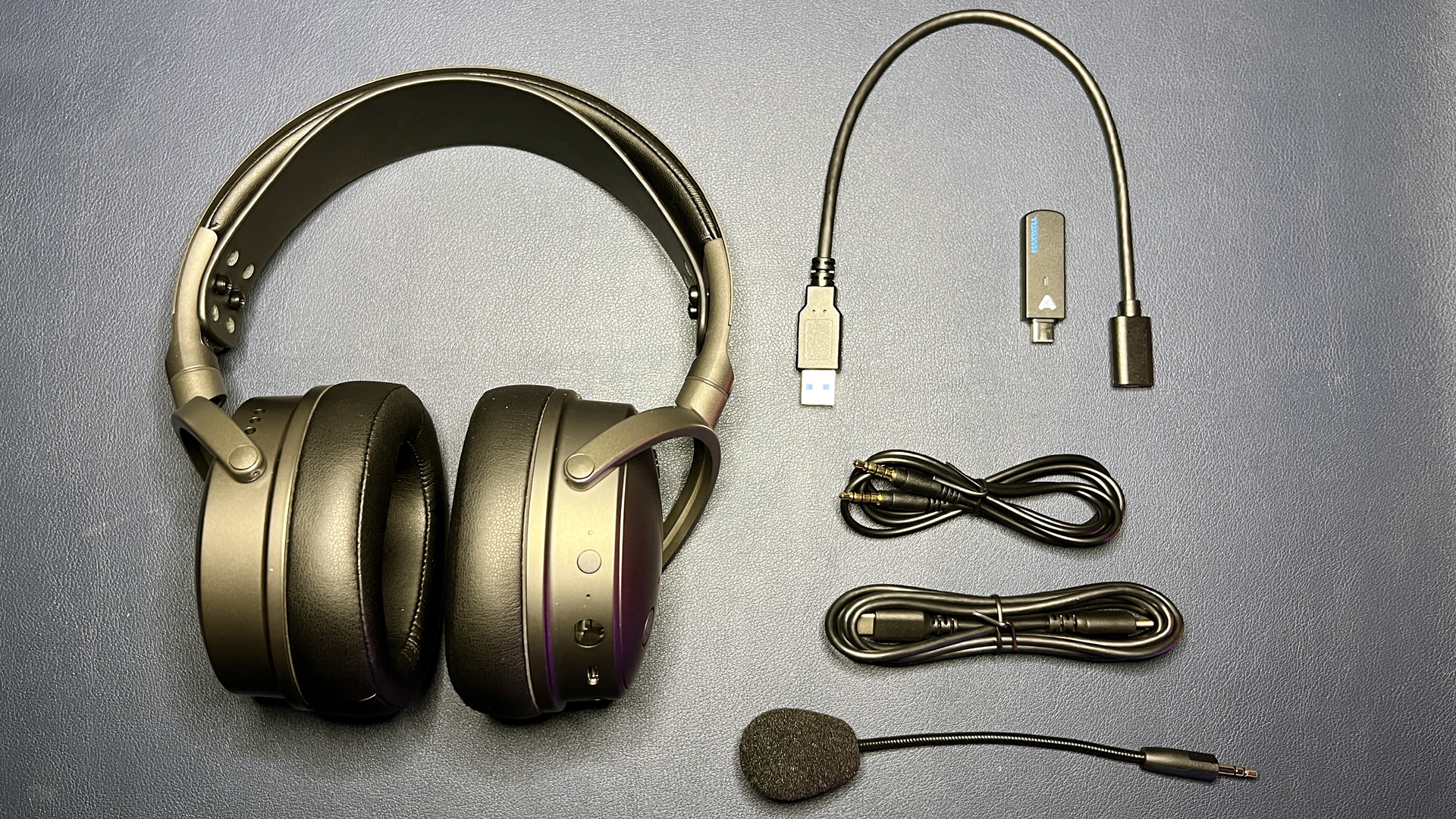
Unlike the LCD-GX, which is less of a gaming headset and more of an audiophile headset slightly rebranded to appeal to gamers, the Maxwell is definitely a gaming headset. It comes with a detachable boom mic and also features built-in beamforming mics in the earcups (though the boom mic is far superior to the beamforming mics). It offers four forms of connectivity — low-latency 2.4GHz wireless, Bluetooth 5.3, wired via USB-C, and wired via 3.5mm analog.
The Maxwell comes in two variations, a $300 PlayStation variant and a $329 Xbox variant (which is more expensive because it includes Microsoft's license as well as an embedded Dolby Atmos license). It's also one of the best wireless headsets we've tested in terms of battery life: 80+ hours over 2.4GHz wireless (the best wireless headset we've tested for battery life, however, is still the 300-hour HyperX Cloud Alpha Wireless — by far).
The Maxwell does an... okay job of executing its gamer-friendly features. The detachable boom mic is pretty good, with full-sounding audio and AI noise suppression, but the built-in mics are basically just a courtesy. It's always nice to see a headset with several forms of connectivity, but I wasn't the biggest fan of how Audeze chose to implement the 2.4GHz wireless/Bluetooth interaction — it's not simultaneous audio-mixing, which I love but can live without, nor does it support manual switching between connection types. Instead, it switches between connected devices automatically, prioritizing Bluetooth. While I understand the reasoning behind this choice — it's so you won't miss important notifications and phone calls on your Bluetooth-connected device — I would much rather switch connections manually. The automatic switching was so frustrating for me that I ended up just having to disconnect my phone from the Maxwell completely, because my immersive, fantastic-sounding gaming audio kept getting interrupted by robot-spam calls.
The Maxwell is also a large headset. That's not to say it's uncomfortable, but you're definitely not going to forget you're wearing it. It weighs 1.06 pounds (490g), and has large, round, glass-infused nylon earcups to house its 90mm drivers. It has leatherette-covered foam earpads that are contoured to fit the curvature of your skull — that's how large these earcups are. It's not super adjustable, either — there's a leatherette tension headband that can be shortened or lengthened via three sets of notches on either side, and the earcups swivel and tilt. The earcups also swivel to lie flat for travel/storage, but the headset doesn't come with a case and is pretty bulky for traveling. That didn't stop me from traveling with it, however — I wore it on a 12-hour flight and didn't once feel discomfort from the heft, clamping force, or overall size, but I also never forgot I was wearing a headset.
The Maxwell is the best-sounding gaming headset you can buy. It's definitely more of a gaming headset than Audeze's LCD-GX (and it's priced more like one, too), and while it's not perfect at implementing its gaming features — it's not bad.
Read: Audeze Maxwell review
Other Gaming Headsets We Tested
Razer BlackShark V3 Pro
Razer's update to the BlackShark lineup added some connectivity options we've been waiting for — specifically, simultaneous dual-wireless connectivity, as well as two wired options (USB-C and analog), plus active noise cancellation. But the updated drivers (Razer's 50mm Triforce Bio-Cellulose dynamic drivers) and new full-band 12mm "HyperClear" mic ended up sounding worse than the previous generation.
The BlackShark V3 Pro still sounded good during our gameplay testing, but I heard a lot of distortion in the highs during music playback. The active noise cancellation, while nice, isn't really that necessary in a gaming headset — especially not one that you're unlikely to travel with. And while the new V3 Pro does have earcups that swivel, they still don't swivel all the way flat. Combined with the wire yokes, this headset just seems to fragile to really take on the road with you, so the added convenience and lifestyle features aren't quite as impressive.
The BlackShark V3 Pro isn't a bad option if you're looking for a premium, feature-packed headset, and you're willing to sacrifice a little sound quality for said features. But if you're looking for pure performance, we still like the BlackShark V2 Pro (2023) better (and it's cheaper, too).
Read: BlackShark V3 Pro Review
Asus ROG Delta II
Asus' ROG Delta II offers everything you'd expect to see in a premium, flagship gaming headset: 50mm titanium-plated drivers, a 10mm super wideband mic, simultaneous wireless audio connection mixing, customizable lighting, and over 100 hours of battery life. It's heavily branded, as most of the ROG lineup is, but it still looks sleek with the Delta line's signature d-shaped earcups. It features a sturdy enough build, but is mostly made of plastic, which isn't the most premium of materials. While the headset is lightweight, I didn't find it to be particularly comfortable — it put some pressure on the top of my head, but it wasn't nearly as bad as the Corsair Virtuoso Max.
The headset's 50mm drivers are a little disappointing for music playback, but sound great in games, with detailed, precise, and well-layered sound. Directional audio is also excellent, and voices come through full and clear. The microphone is decent enough for a headset mic, but it's awkwardly placed at the point of right earcup, which angles it downward — not toward your face.
The ROG Delta II is a pretty good headset overall, but it's also fairly pricey at $230. If you're spending over $200 on a gaming headset, you probably don't want to buy a second headset just to listen to music.
Read: Asus ROG Delta II Review
Corsair Virtuoso Max
Corsair's latest addition to its Virtuoso line of headsets is a wireless, over-ear headset with simultaneous dual-wireless connectivity and 50mm dynamic graphene drivers with a frequency response range of 20 - 40,000 Hz — quite a bit wider than the average gaming headset. The Virtuoso Max comes with a sturdy travel case and is made with premium materials — with brushed metal earcups and a leatherette-covered headband, and features a detachable omnidirectional boom mic. The tagline is "Sounds so good. It changes everything," and I won't lie — this headset does deliver on that, especially for gaming. I heard sounds I wasn't aware even existed in games when I was wearing the Virtuoso Max.
Unfortunately, where the Virtuoso Max didn't deliver was comfort: while it looks like it has thick padding on the headband and earcups, don't be fooled — that padding is stiff and much shallower than it looks. I had to take breaks every one to two hours while I was testing this headset because of the pressure it put on the top of my head and on my ears.
Read: Corsair Virtuoso Max Review
SteelSeries Arctis Nova 5 Wireless
While the SteelSeries Arctis Nova 5 Wireless headset, which retails for $130, is quite a bit more affordable than the Arctis Nova Pro, it might make too many compromises. It does have a great design — a lightweight, comfortable build with the brand's signature stretchy ski band and a fully-retractable boom mic. It's definitely a headset you'll be able to wear all day without any issues, and it looks more like a lifestyle headset than a gaming peripheral.
The Arctis Nova 5 features dual wireless connectivity with a quick-switch button and 50 - 60 hours of battery life, which is the longest battery life seen in a SteelSeries headset to date (though it's nowhere near that of many competitors). It sports the brand's 40mm dynamic drivers, which have a frequency response range of 20 - 22,000 Hz and is supported by SteelSeries Sonar software as well as an iOS/Android app that lets you switch up sound profiles without connecting to your PC. I'm not the biggest fan of these drivers, as they tend to have some distortion in the lower mid-range as well as overall compression, but they sound decent for gaming and movies/shows and the headset handles virtual surround quite well.
Read: SteelSeries Arctis Nova 5 Wireless Review
Turtle Beach Atlas Air
Most gaming headsets have a closed-back design, with solid earcups that keep sound contained to the listener's ears. But for those who want a more open, airy soundstage, an open-back headset like the Turtle Beach Atlas Air is a good alternative (or, perhaps a set of solid computer speakers). The Atlas Air is a wireless open-back gaming headset with an ultra-comfortable, lightweight frame and a detachable flip-to-mute microphone. It features both 2.4GHz wireless and Bluetooth 5.2 connectivity — not simultaneous, but quick-switch — and gets up to 50 hours of battery life, which is pretty good considering its 10.61oz / 301g weight.
The Atlas Air has 40mm "high-precision" dynamic drivers that support 24-bit (hi-fi) / 96 kHz audio (in PC mode), and have a frequency response range of 20 - 40,000 Hz. The open-back design means there's some sound leak — you'll hear ambient noise around you and those around you will hear what you're listening to. I was impressed with the headset's open, natural sound and balanced sound profile. Games with rich, immersive environments sounded especially good on the Air, but directional audio cues were a little harder to pinpoint because of the headset's open-back design.
The Atlas Air has some issues — its detachable flip-to-mute boom mic is unique but not well-implemented, and Turtle Beach's Swarm II peripheral software is finicky and inconsistent. These issues could be fixed with a separate USB-powered gaming mic and a firmware update, though, and the headset is otherwise impressive in both comfort and performance.
Read: Turtle Beach Atlas Air Review
Logitech G Pro X 2 Lightspeed
The Logitech G Pro X 2 Lightspeed is a great gaming headset, thanks to its low-latency wireless connection and decent battery life (up to 50 hours over a 2.4GHz wireless connection), and it's comfortable and well-built. It features 50mm graphene drivers with a frequency response of 20 - 20,000 Hz and audio sounds good, with neutral mids and bumped up bass out of the box. The soundstage felt somewhat narrow, but games sounded great and voices came through loud and clear.
It has a detachable boom microphone that's fairly average for a gaming headset, and it features three forms of connectivity: wired (analog, 3.5mm), 2.4GHz wireless, and Bluetooth. It can only connect to one audio source at time (audio sources can't be mixed), but the wireless connections are solid. It's a great gaming headset, but it doesn't really do much to stand out in the world of gaming headsets.
Read: Logitech G Pro X 2 Lightspeed Review
How We Test Gaming Headsets
Peripherals are as much about comfort, convenience, and usability as they are about performance, and headsets are no exception. First, we inspect each headset's build quality, materials, and included accessories, and try it on a number of different-sized heads to determine how easily and widely adjustable it is. We then spend hours with each headset in a variety of different listening situations — gaming, music, watching movies and TV, chatting over several different platforms. If a headset has multiple options for connectivity, we test the audio quality, latency, and strength of each connection across multiple devices, and we also test how well a headset handles switching between connections and devices.
We have a few standard game titles and songs all of our reviewers play/listen to while testing, but our reviewers use their own games and songs to do the bulk of the testing — because people are better judges of audio quality when they're listening to things they enjoy and are very familiar with.
My primary games for testing include Alien: Isolation and Battlefield 1, both of which are well-known for their impressive sound design. (Plus, I've played Alien: Isolation enough times by now that I'm — sort of — immune to the terror. I'm not great with survival horror games, in general.) Also on my roster are games with detailed, multi-layered, aurally-immersive environments: Uncharted 4, God of War Raganarok, and at least one game with vibrant, bustling city streets (most recently this has been Baldur's Gate 3). For music, I use my own audio test playlist, which includes classic audio test tracks (Journey's Don't Stop Believin', The Eagles' Hotel California - Live On MTV, 1994, Enya's Orinoco Flow), as well as some of my favorites (K-391's Lonely World, Kaskade's POW POW POW), and features a mix of genres and styles that showcase just about every aspect of a headset's sound profile.
Testing doesn't stop when the review goes up, however — we also check in periodically with our reviewers to determine how well headsets are holding up over weeks, months, and years. We loved the SteelSeries Arctis Nova Pro when it first launched, but we've had too many issues with it mysteriously dropping connectivity in the past year to still be able to recommend it as a top pick. We've had similar connectivity problems, as well as build quality issues, with the Corsair Virtuoso RGB Wireless XT — at least three of our editors use this headset as their daily driver, and one has had to replace the earpads twice in two years (earpads aren't meant to last forever, but they should last longer than that).
Quick Gaming Headset Shopping Tips
- Wired or wireless: Wired headsets are less expensive, easy to connect, and don't need to be charged. If you typically game at your desk, a wired option will keep things cheap and simple — it's difficult to misplace and it won't die on you mid-game. But there's no denying the convenience of a wireless headset, which lets you move around without being tethered to your PC, and can connect to other devices — sometimes simultaneously — such as phones, tablets, and consoles.
- 2.4GHz vs. Bluetooth: If you do go with wireless, only a low-latency 2.4GHz wireless connection will be fast enough for competitive gaming. Bluetooth is still convenient for when you're not gaming, however, and is a good additional feature to look for if you want a headset that can double as a pair of lifestyle headphones.
- Headband and earcups: Comfort is more subjective and difficult to measure than audio output/input, but it's probably the most important factor to consider when you choose your headset. Check measurements to make sure the headband expands enough to fit your head, and look for earcups that tilt and pivot to accommodate your skull. Earcup material can make a big difference when it comes to both comfort and acoustic performance — leather/leatherette offers better passive noise isolation, while fabric is more breathable. Gaming companies are starting to make earcups and headband padding replaceable, which is essential if you want your headset to last more than a couple of years (as earpads usually aren't designed to last more than 1 - 2 years — if that).
- Audio: In addition to detailed, accurate reproduction and good spatial resolution, the best gaming headsets can also connect to, and mix, multiple audio inputs. If you're looking for immersive sound, look for a headset with a wide, detailed soundstage and decent virtual surround-sound.
- Microphone: An external boom mic isn't strictly necessary, but will help pick up your voice (and only your voice) clearly. Of course, if you're planning on using this headset away from your PC, you'll want to make sure the boom mic tucks away or detaches from the headset. Detachable boom mics can also extend the lifespan of your headset, as they can be easily replaced.
Whether you're shopping for one of the best gaming headsets that we listed above or a similar model, you may find savings by checking out our lists of best Razer promo codes, best Corsair coupon codes and best Newegg promo codes.
MORE: Best Wireless Gaming Headsets
MORE: Best Gaming Keyboards
MORE: Best Gaming Mouse
Get Tom's Hardware's best news and in-depth reviews, straight to your inbox.

Sarah Jacobsson Purewal is a senior editor at Tom's Hardware covering peripherals, software, and custom builds. You can find more of her work in PCWorld, Macworld, TechHive, CNET, Gizmodo, Tom's Guide, PC Gamer, Men's Health, Men's Fitness, SHAPE, Cosmopolitan, and just about everywhere else.
-
AlessandroP90 you just need to go online to find out that the Razer Blackshark V2 2023 emits a very annoying continuous static noise when you open any program to talk. The problem has been going on for more than a year and it depends on the Dongle from what has been seen, however it is shameful that a product at this price is damned unusable for anyone who plays.Ps: even more serious is that in 20 reviews searched on the internet only 1 points out the problem.Reply -
mbutler532011 This is a really frustrating article if you are looking for a wired headset.Reply
Coming here from the the link on the wireless headset page which says this is the page to go to for wired headsets. Yet the "best for most" is a wireless-only. The "best budget" says its surround-sound doesn't work in the review. Then there is a "best for Audiophiles" - another wireless headset.
plus one more that was tested but not recommended
And thats it!
if you are not going to recommend any wired headsets then just say so.
